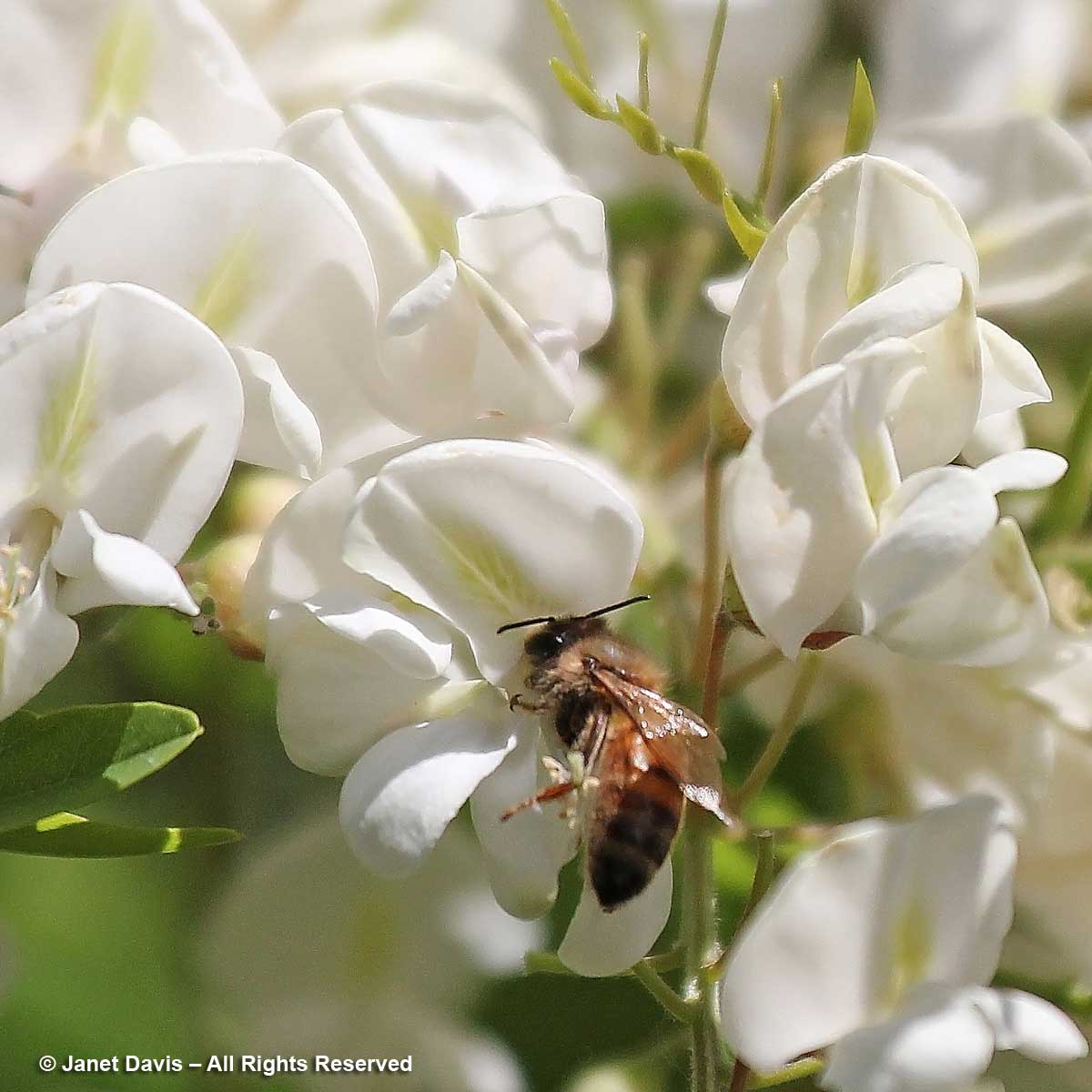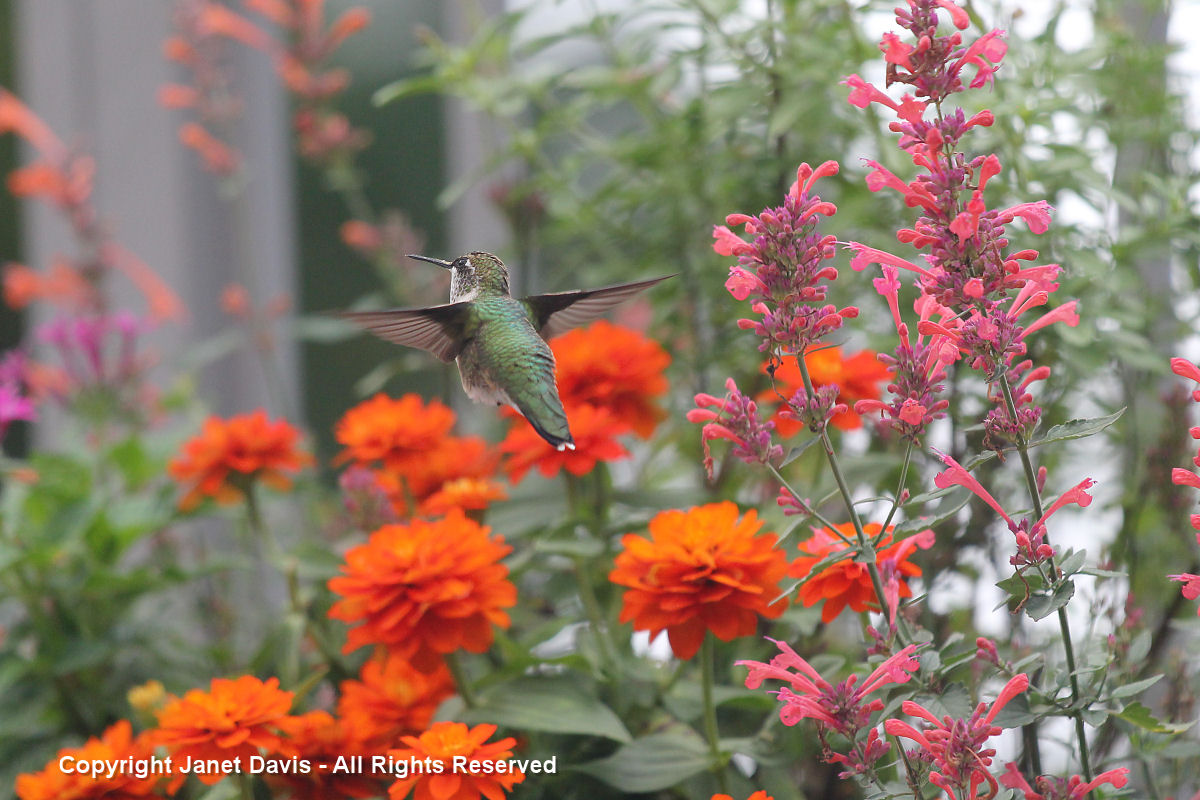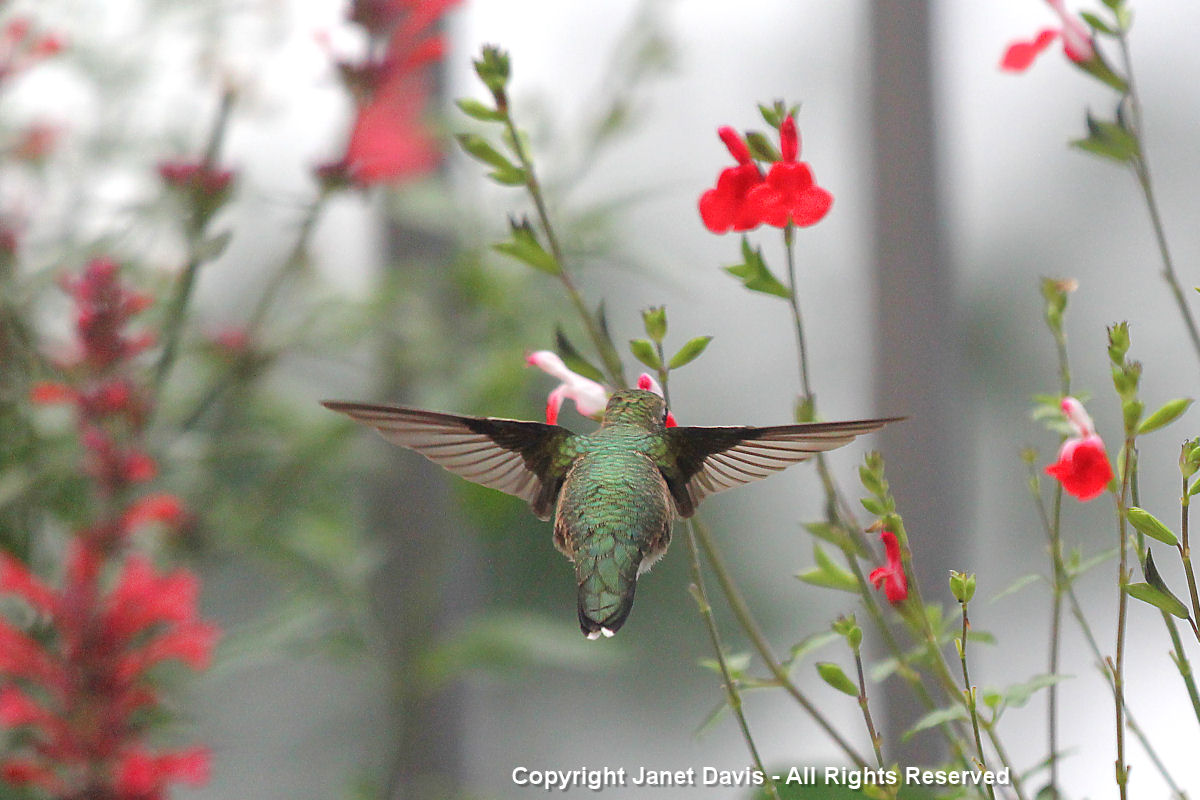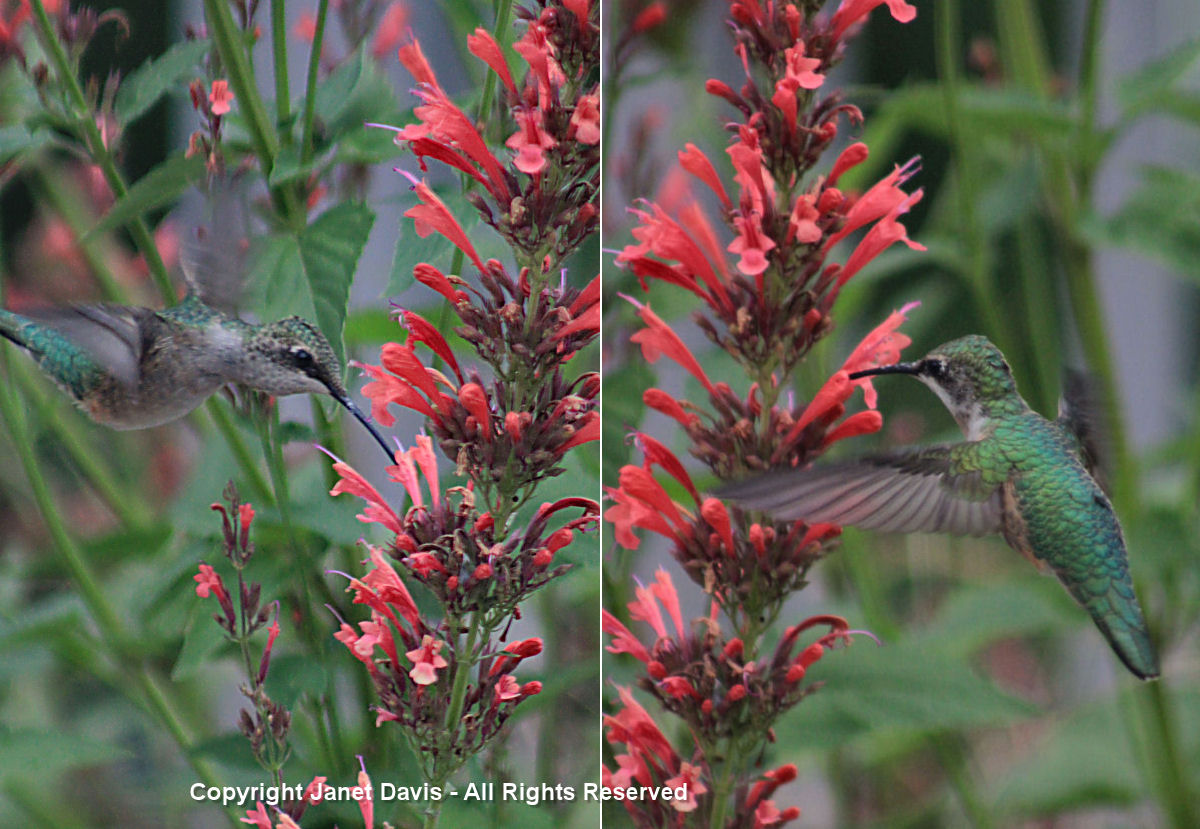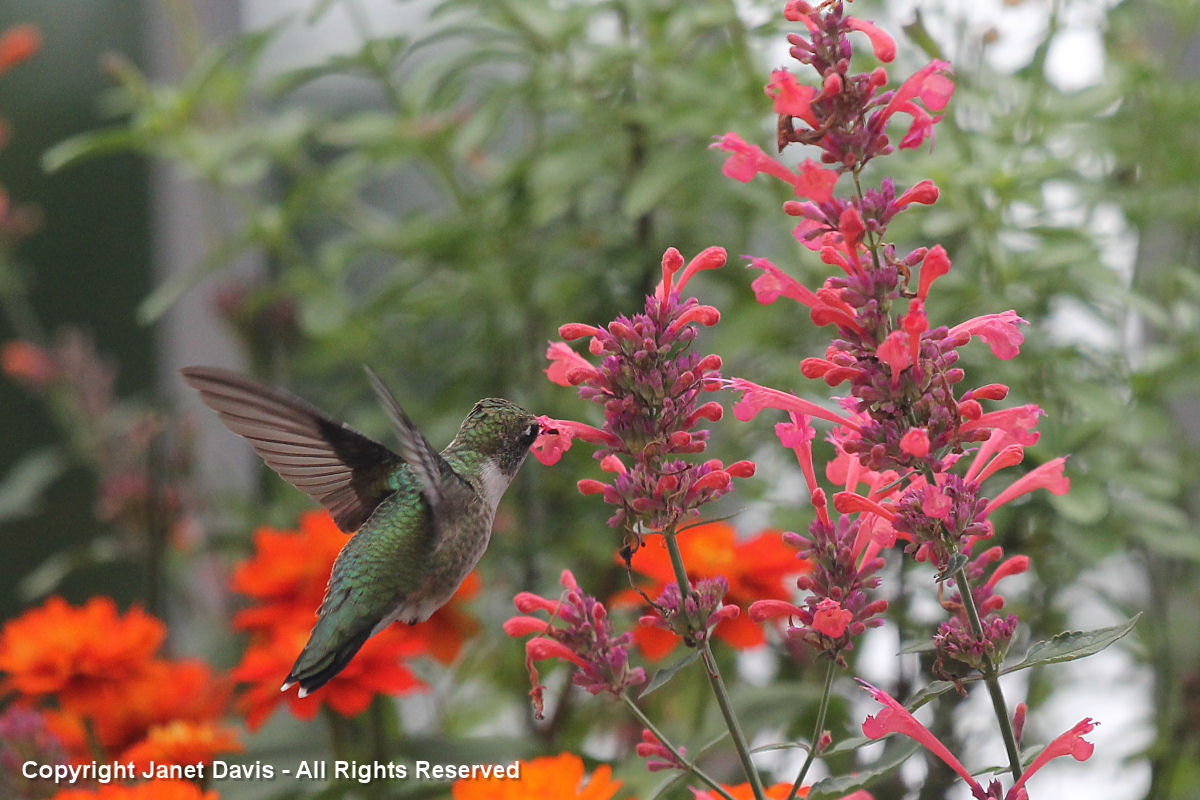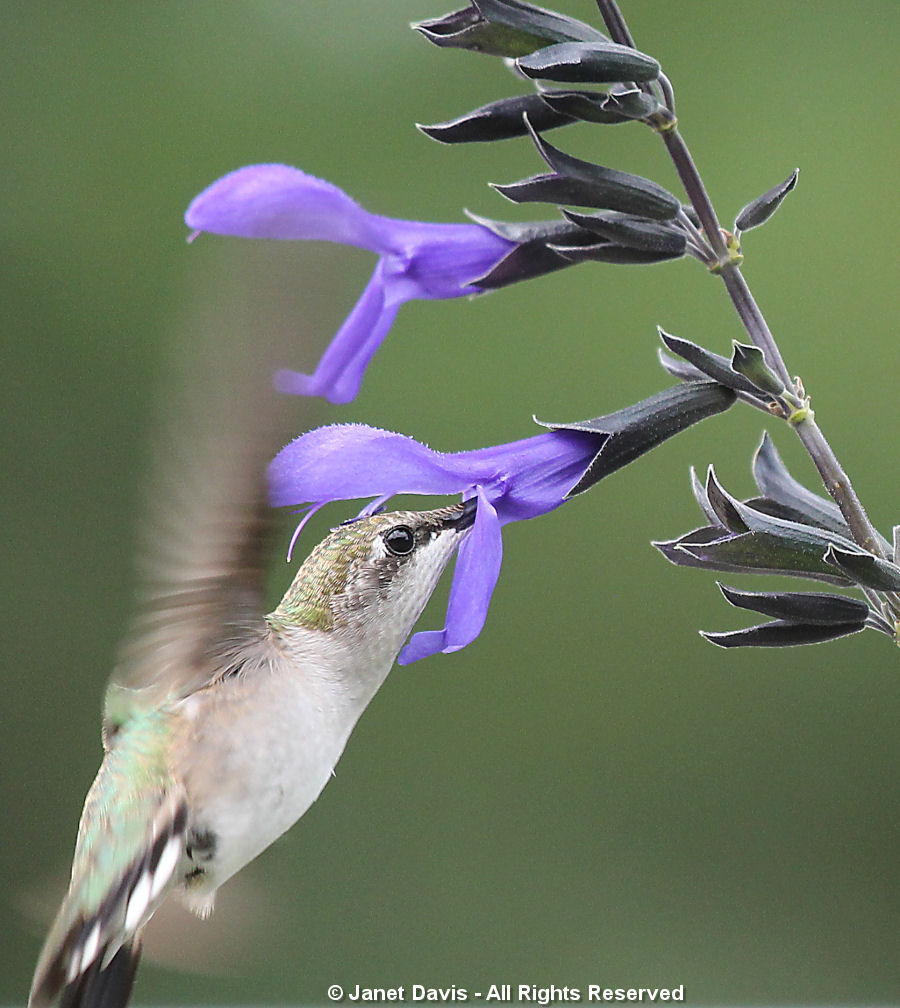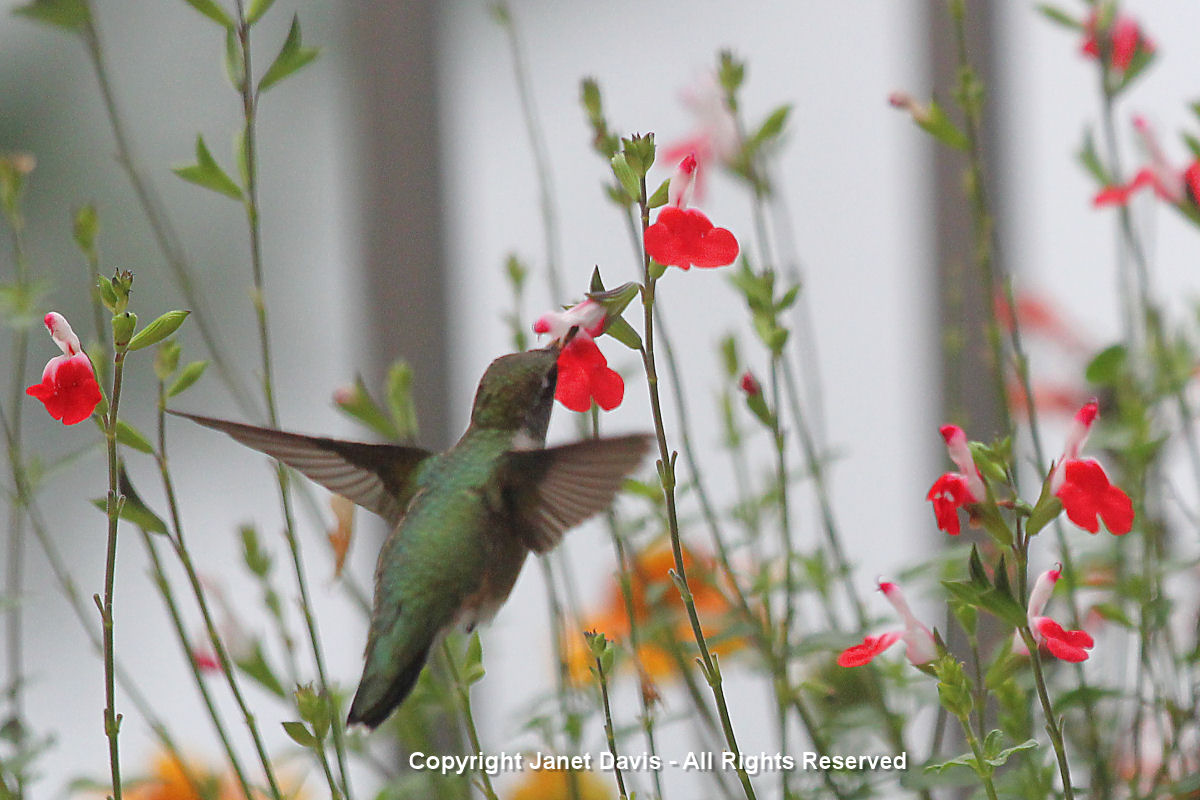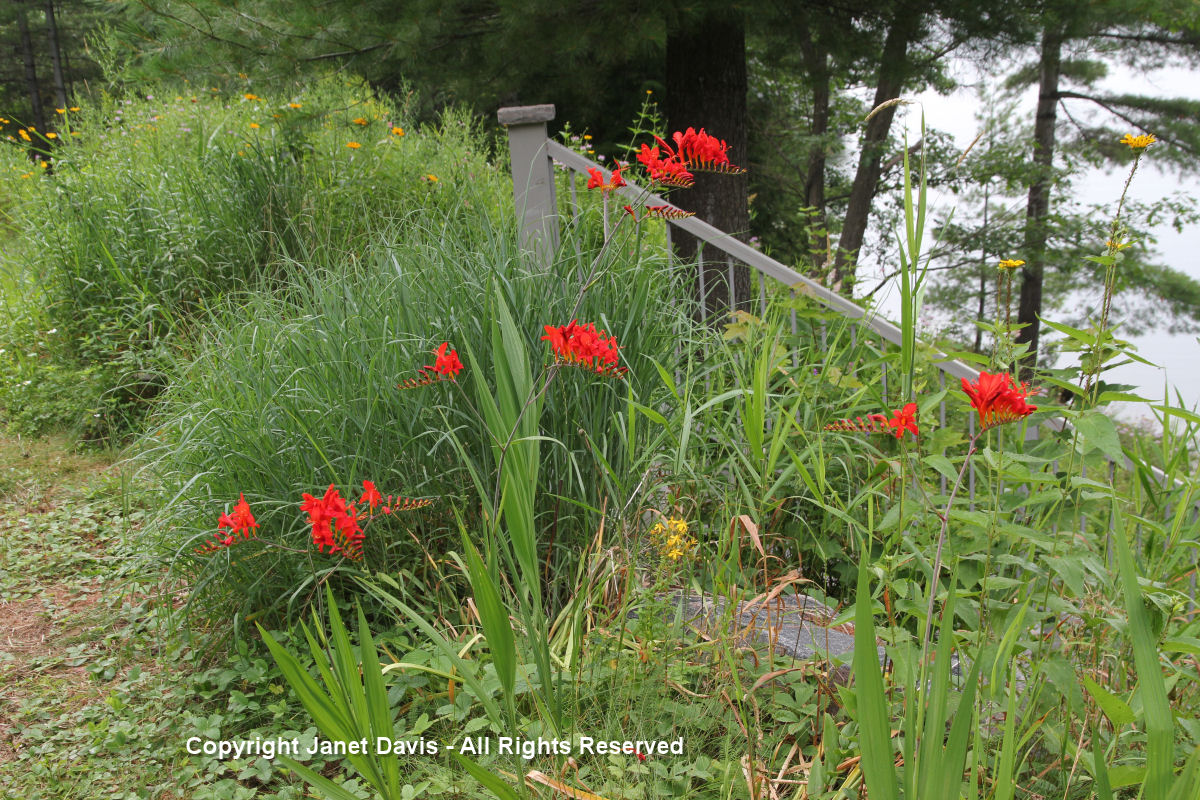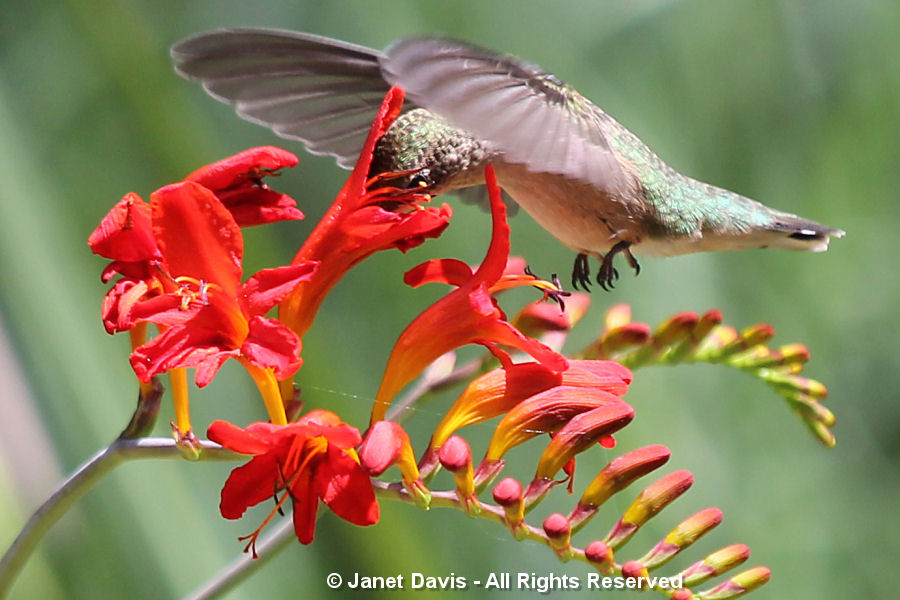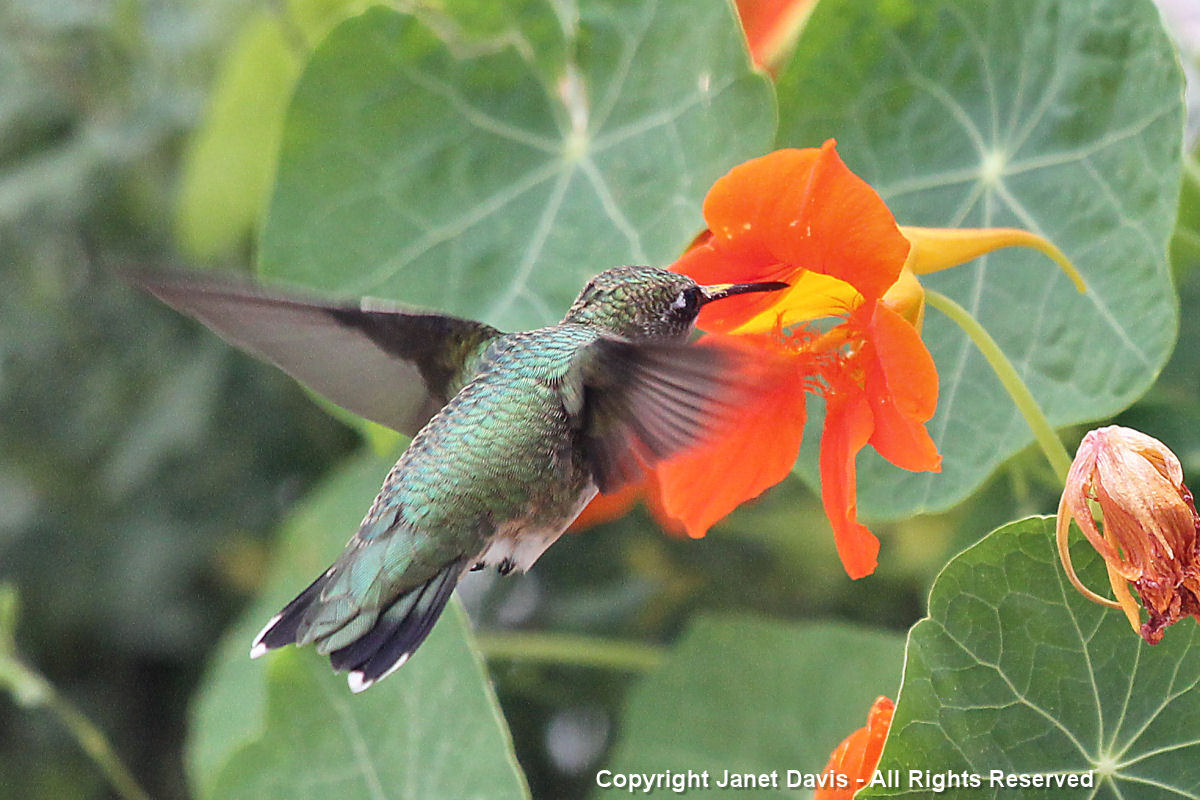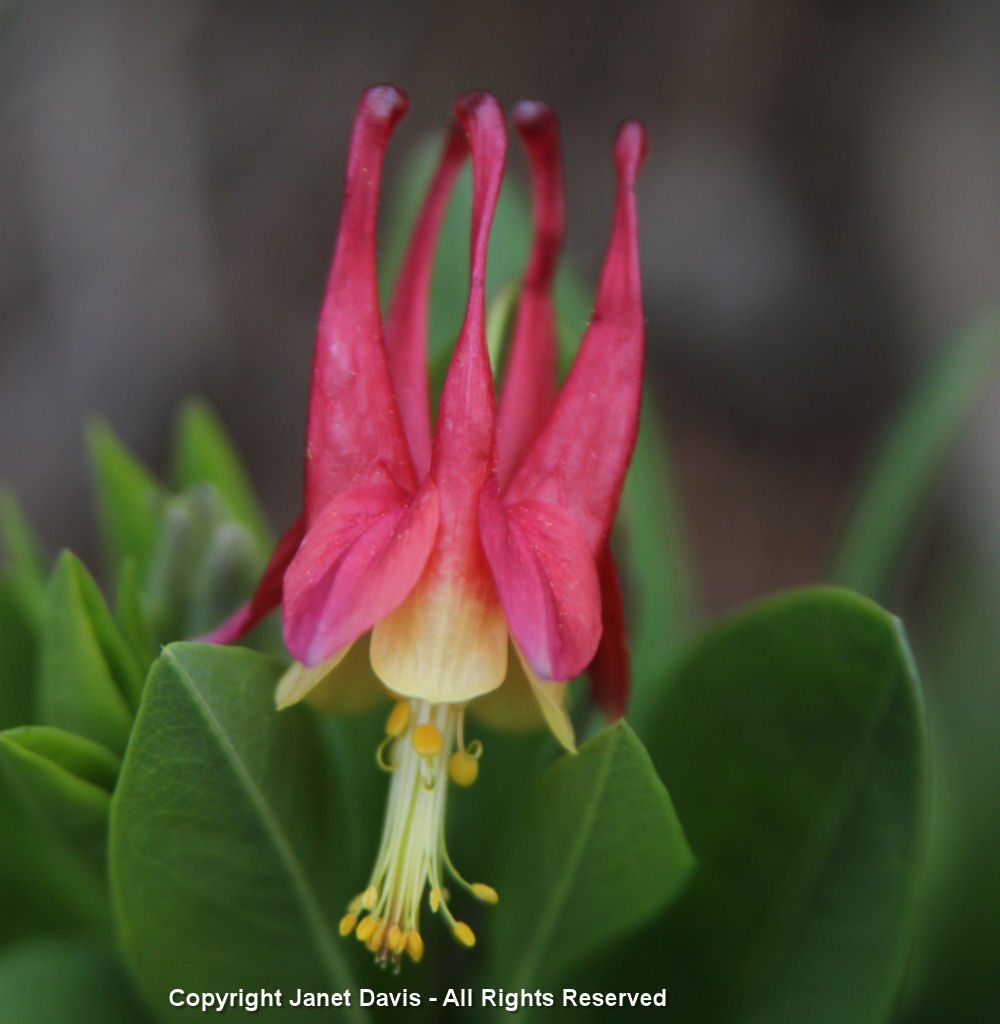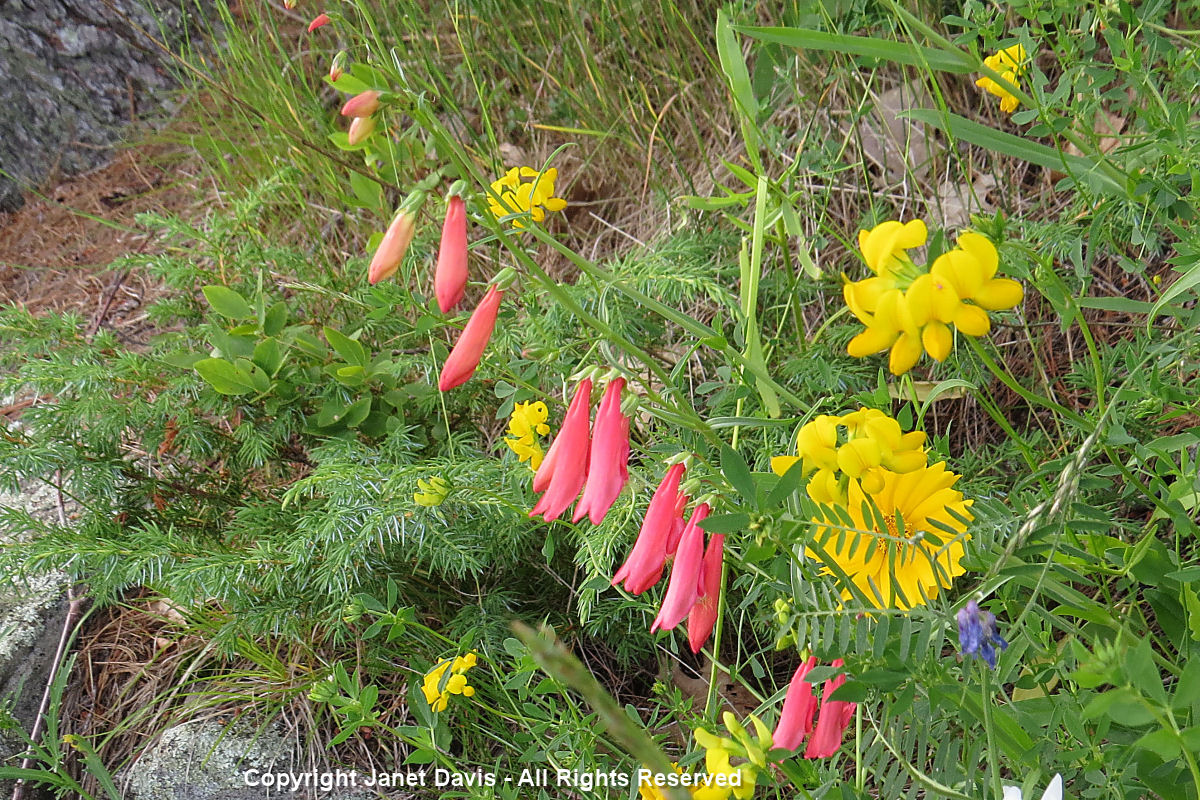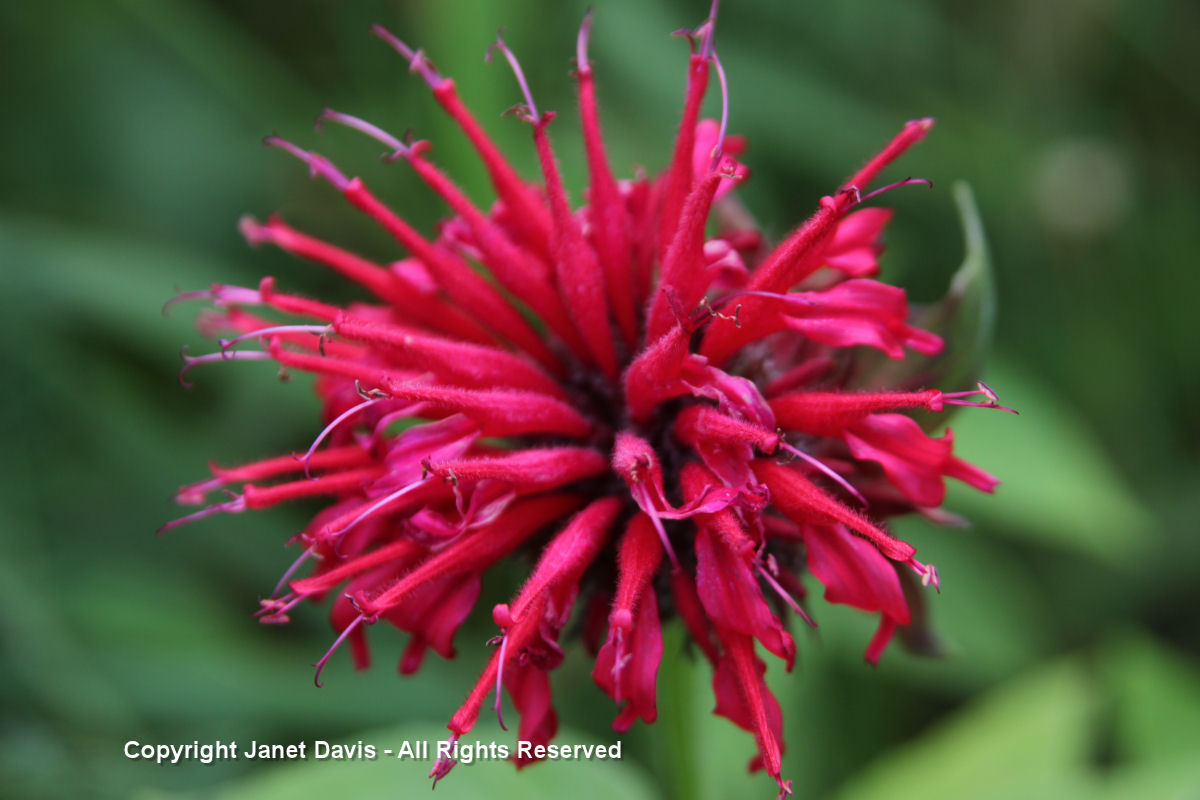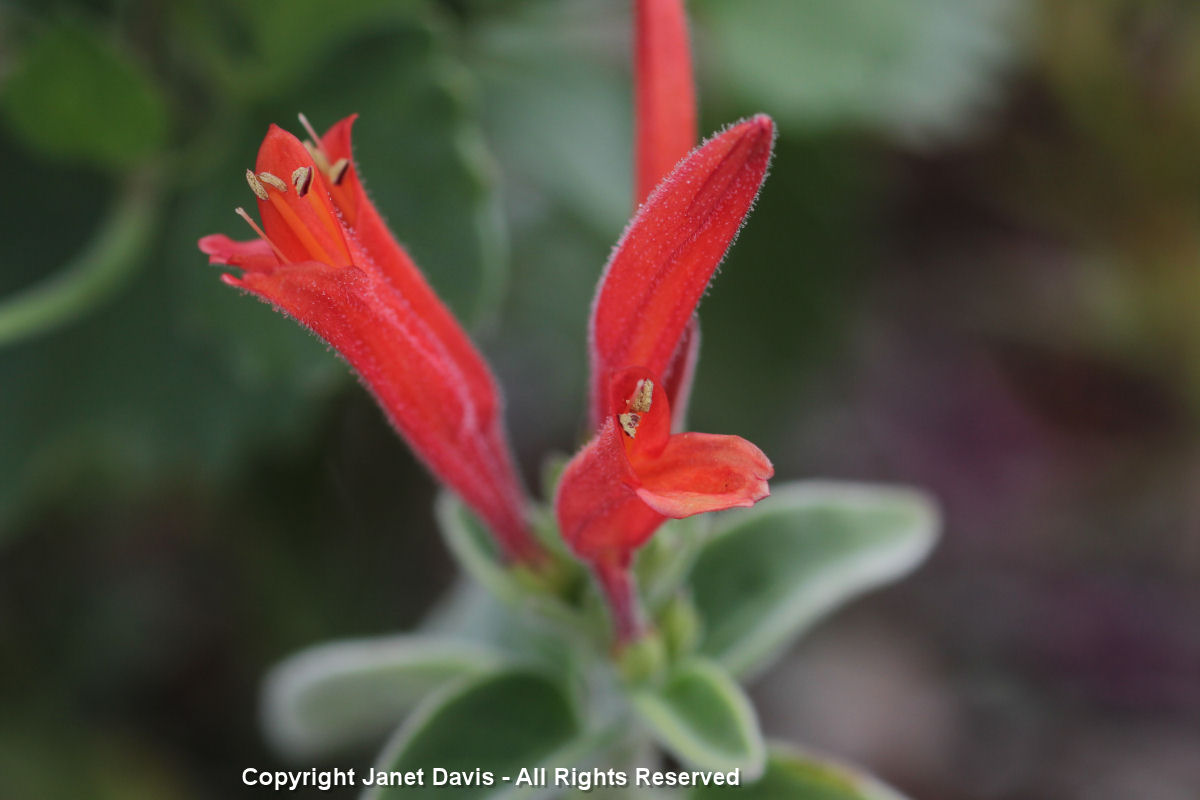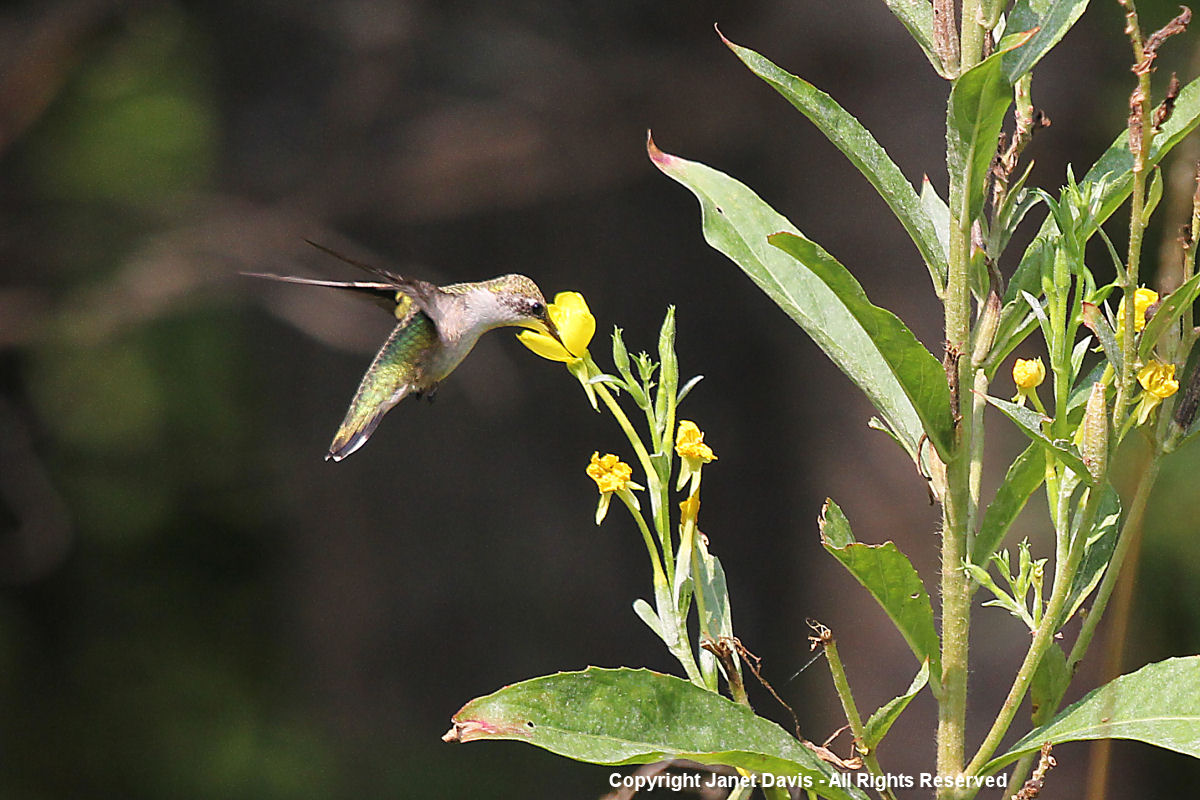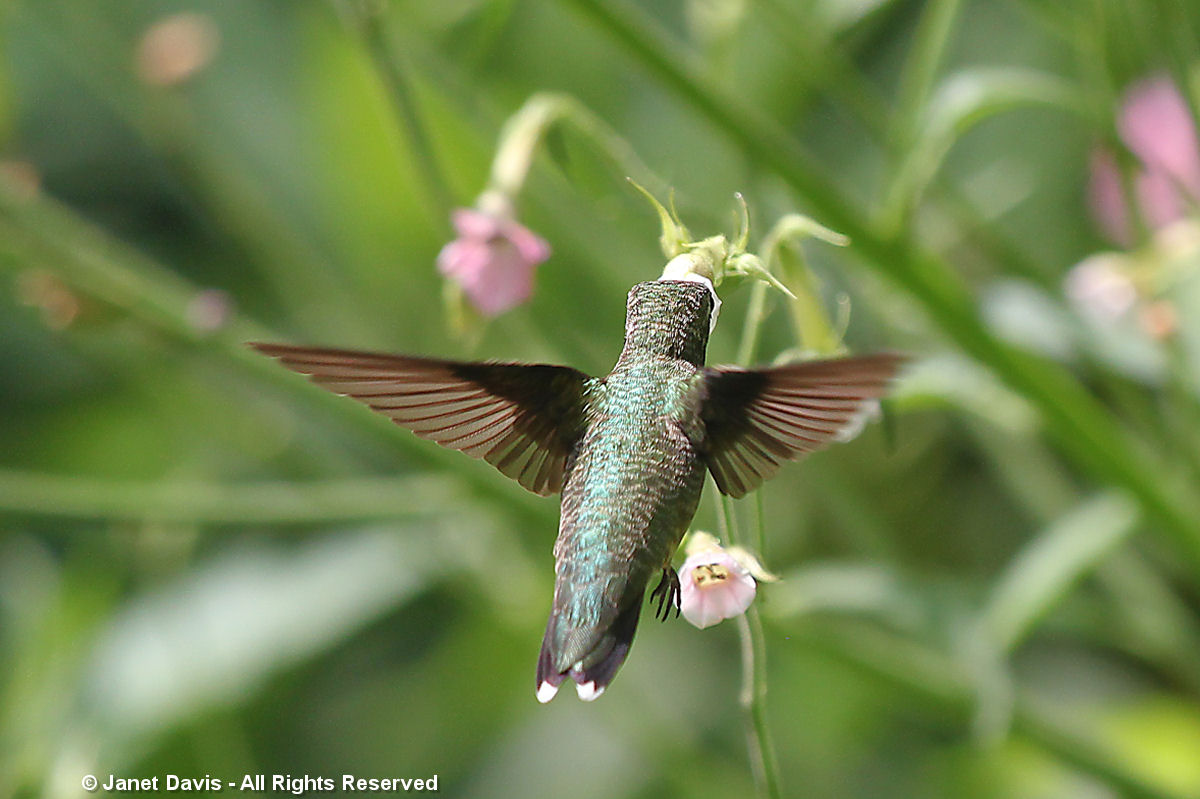Winter is slowly coming to an end and I’ve completed the fourth full month of my 2020-21 Covid project – 28 more pollinator vignettes on my Facebook and Instagram accounts. (If you missed the other months, here are the links for November, December and January. And if you’re on Instagram or Facebook, you can access all of my posts with ALL of the additional photos by typing into the search bar #janetsdailypollinator. It’s hashtag magic!) And this is the February family photo of the plants I mention below!
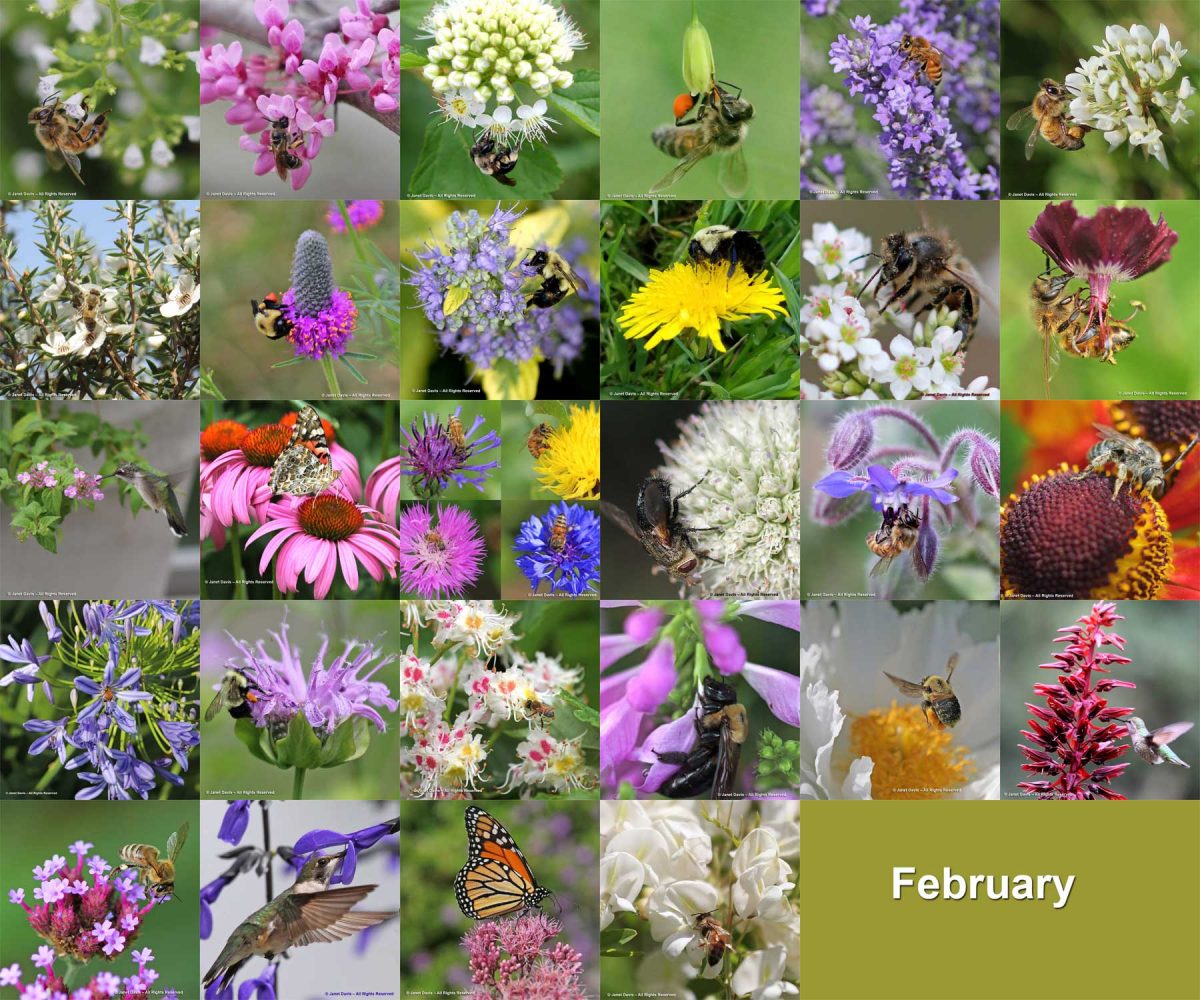
I began the unusually snowy month on Feb. 1st with calamint (Calamintha nepeta ssp. nepeta), with its clouds of tiny white flowers always buzzing with bees. In that post, I also included some photos of a beekeepers’ honey harvest tutorial at the Toronto Botanical Garden.
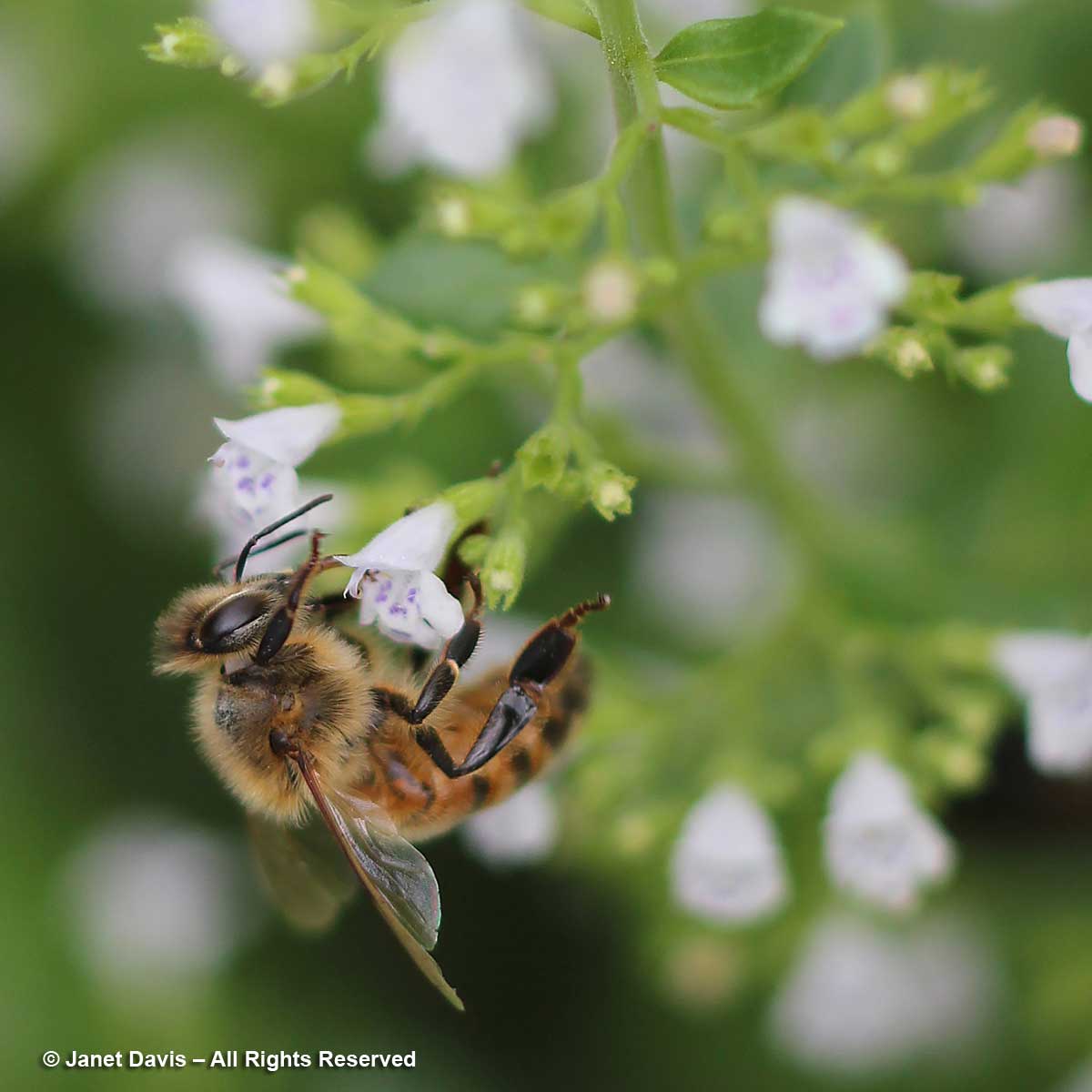
On Feb. 2nd I honoured redbuds (Cercis spp.), whose magenta or white pea flowers always attract lots of bees and hummingbirds to the trees, including the unequal cellophane bee (Colletes inaequalis) below.
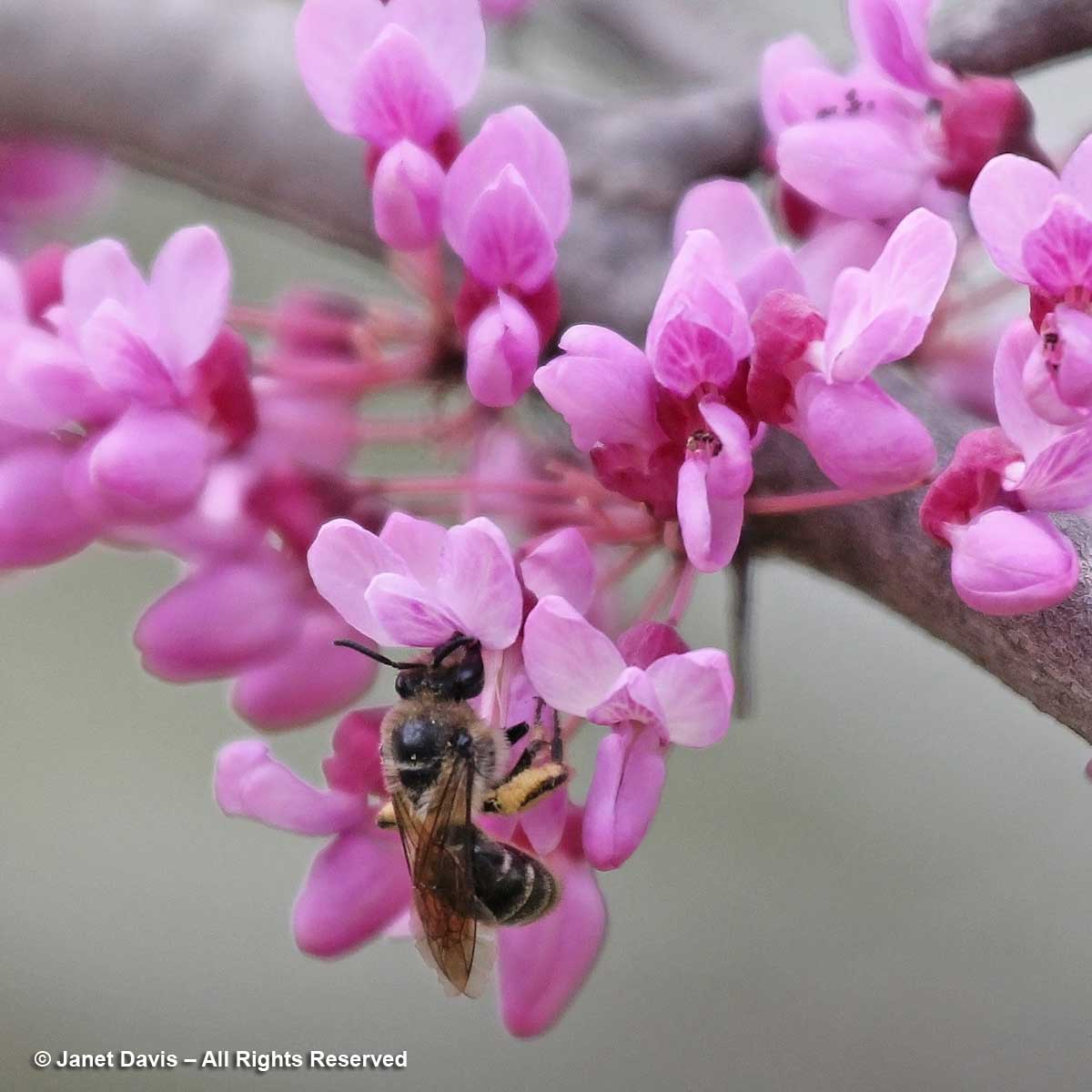
Native ninebark (Physocarpus opulifolius) was my star for Feb. 3rd, a big shrub that attracts many native bees and honey bees to the flower clusters, like the andrena bee below.
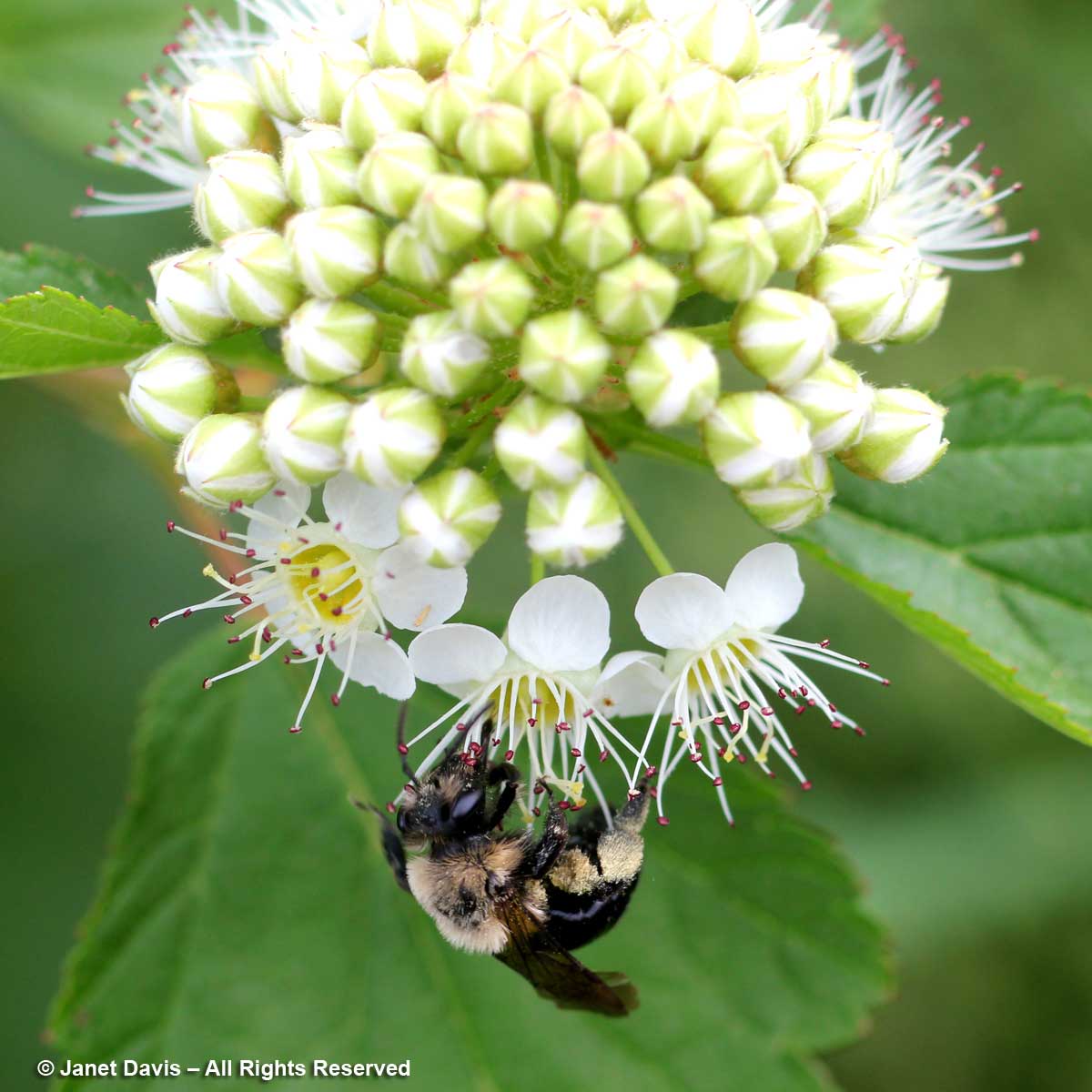
On Feb. 4th, I showed off a honey bee performing acrobatic maneuvers to gather the bright orange pollen of male asparagus flowers (Asparagus officinalis). On that day, I also included my recipe for a favourite dinner party course, curried creamy of asparagus soup.
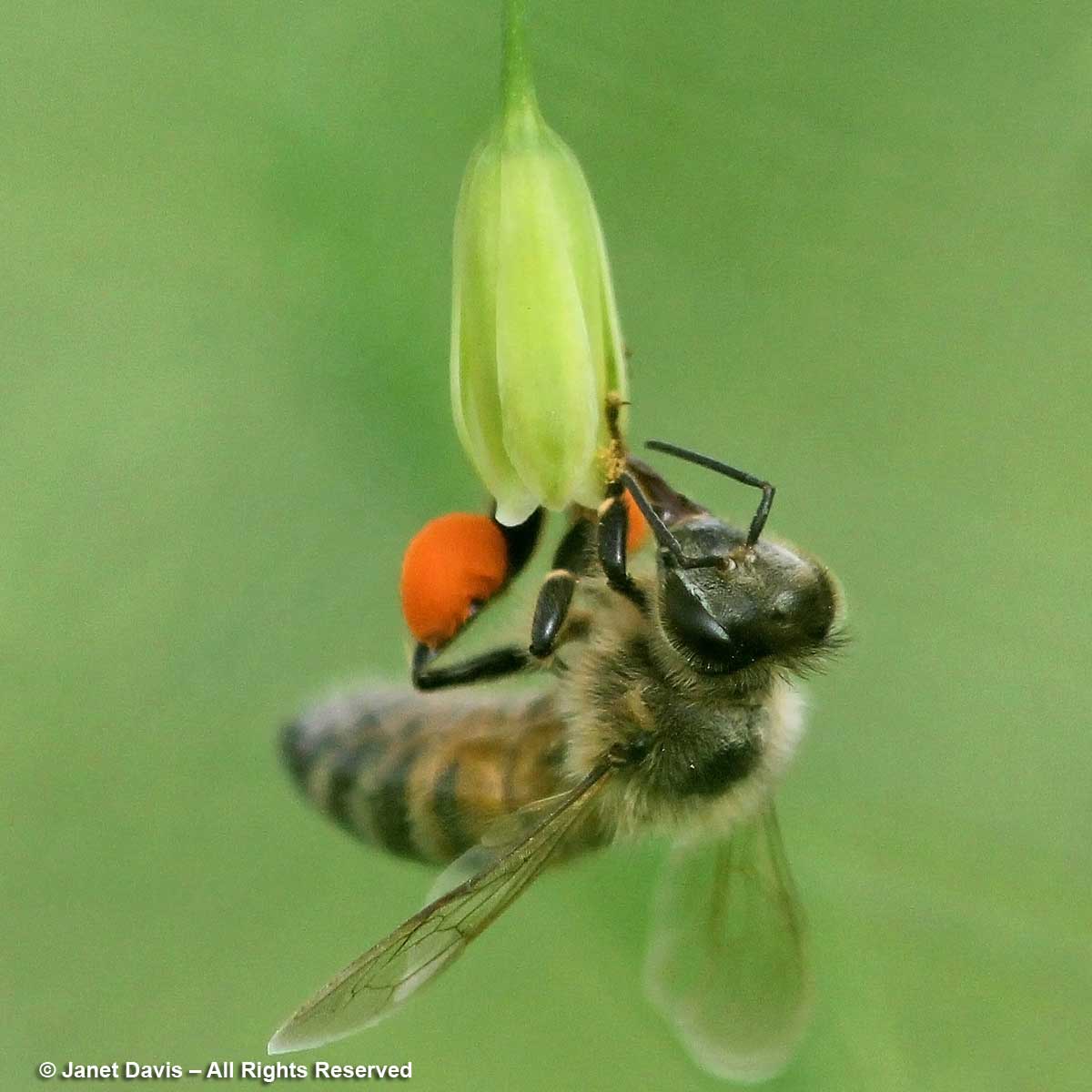
Bees love fragrant lavender and so do gardeners. Feb. 5th featured a few species, including English lavender (Lavandula angustifolia), below, with a honey bee – as well as ways to design with lavender.
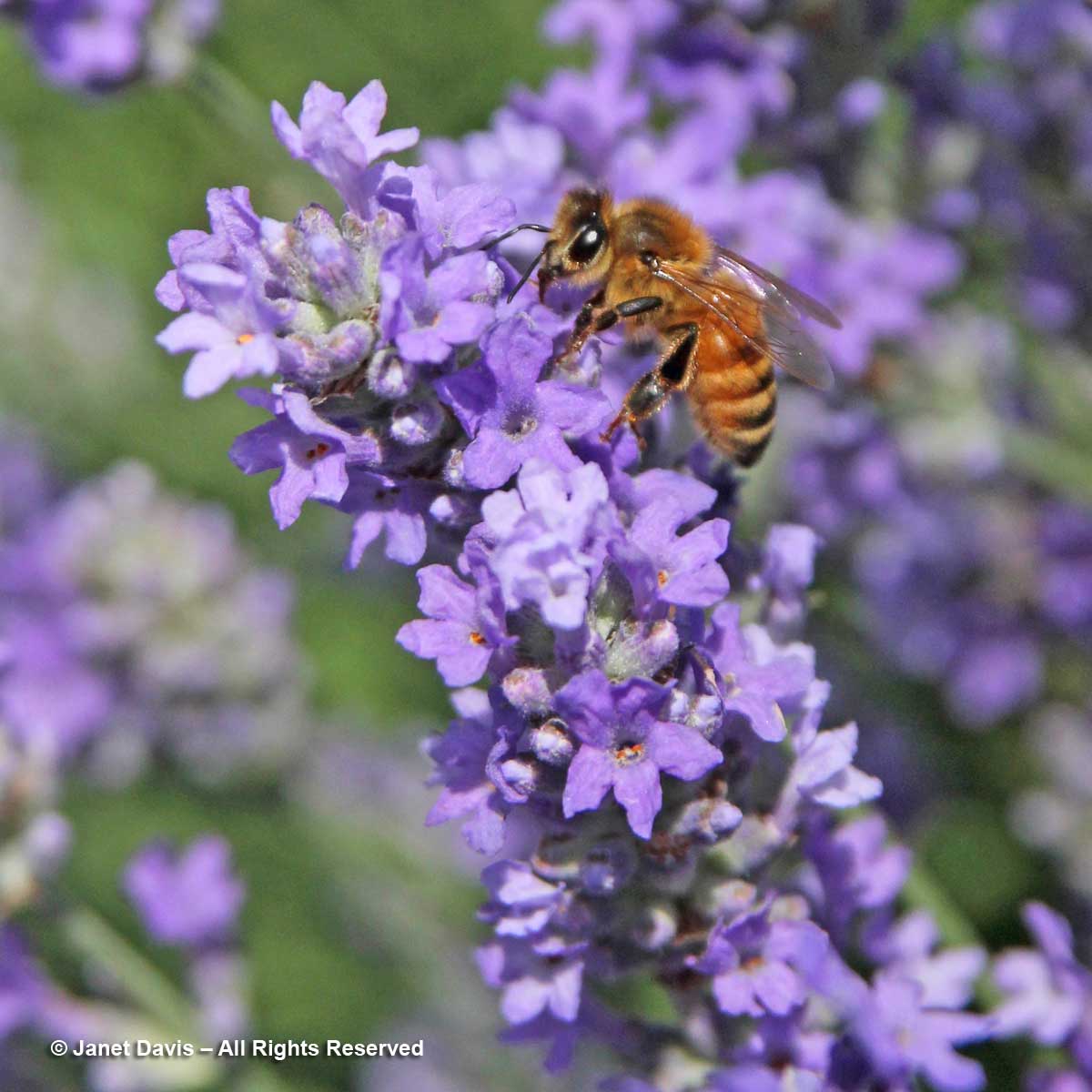
Feb. 6th paid homage to all kinds of clovers and sweet clovers, beginning with Dutch white clover (Trifolium repens) hosting a honey bee, below.
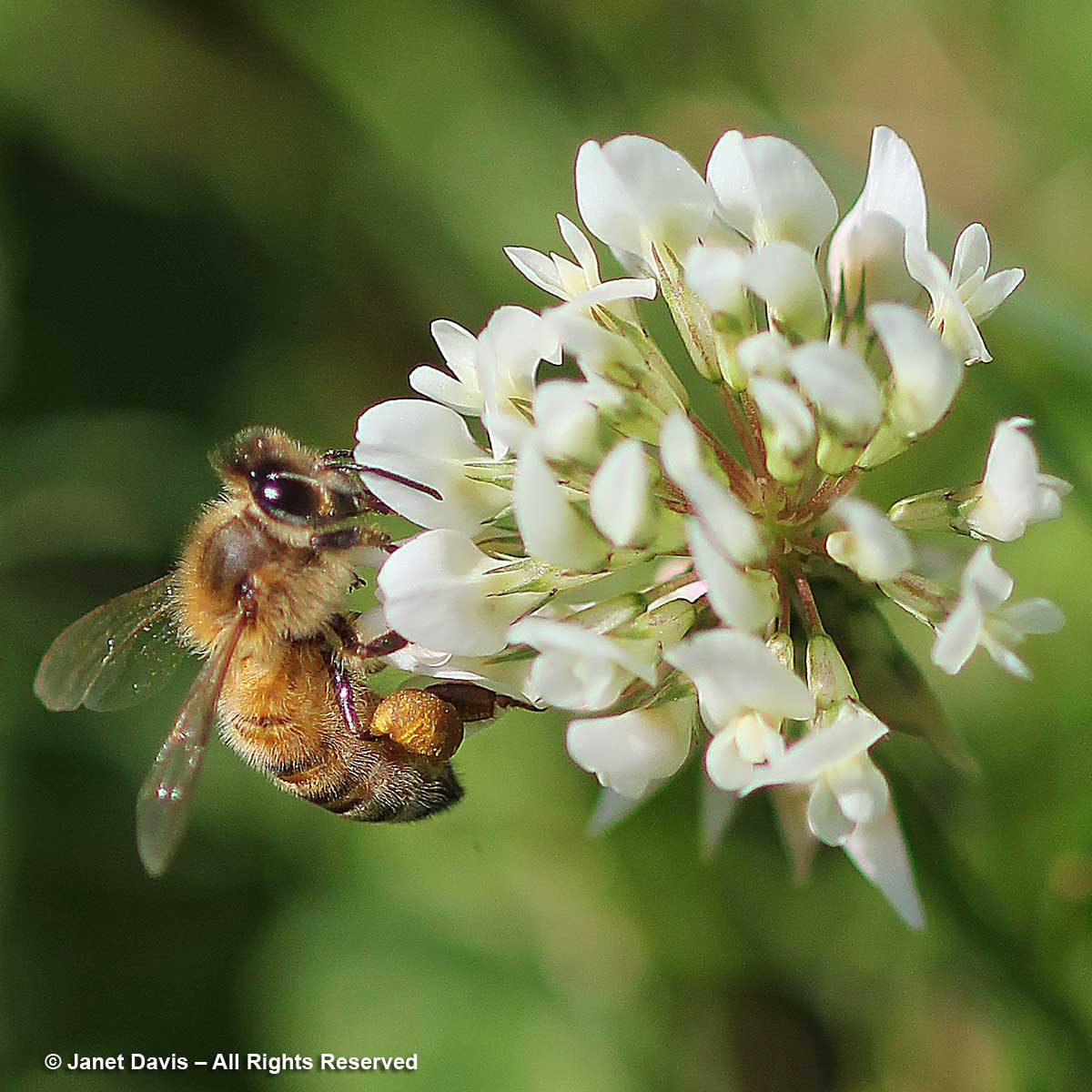
On Feb. 7th, I took a fast hop to New Zealand to recall my great joy in 2018 at finding a lonely honey bee on manuka (Leptospermum scoparium) at the Waitangi Treaty Grounds. That white-flowered shrub is the source of the famed (and very strong) manuka honey! Check out my blog about this part of NZ, titled Bay of Islands – Māoris, Kauris and Kia Ora.
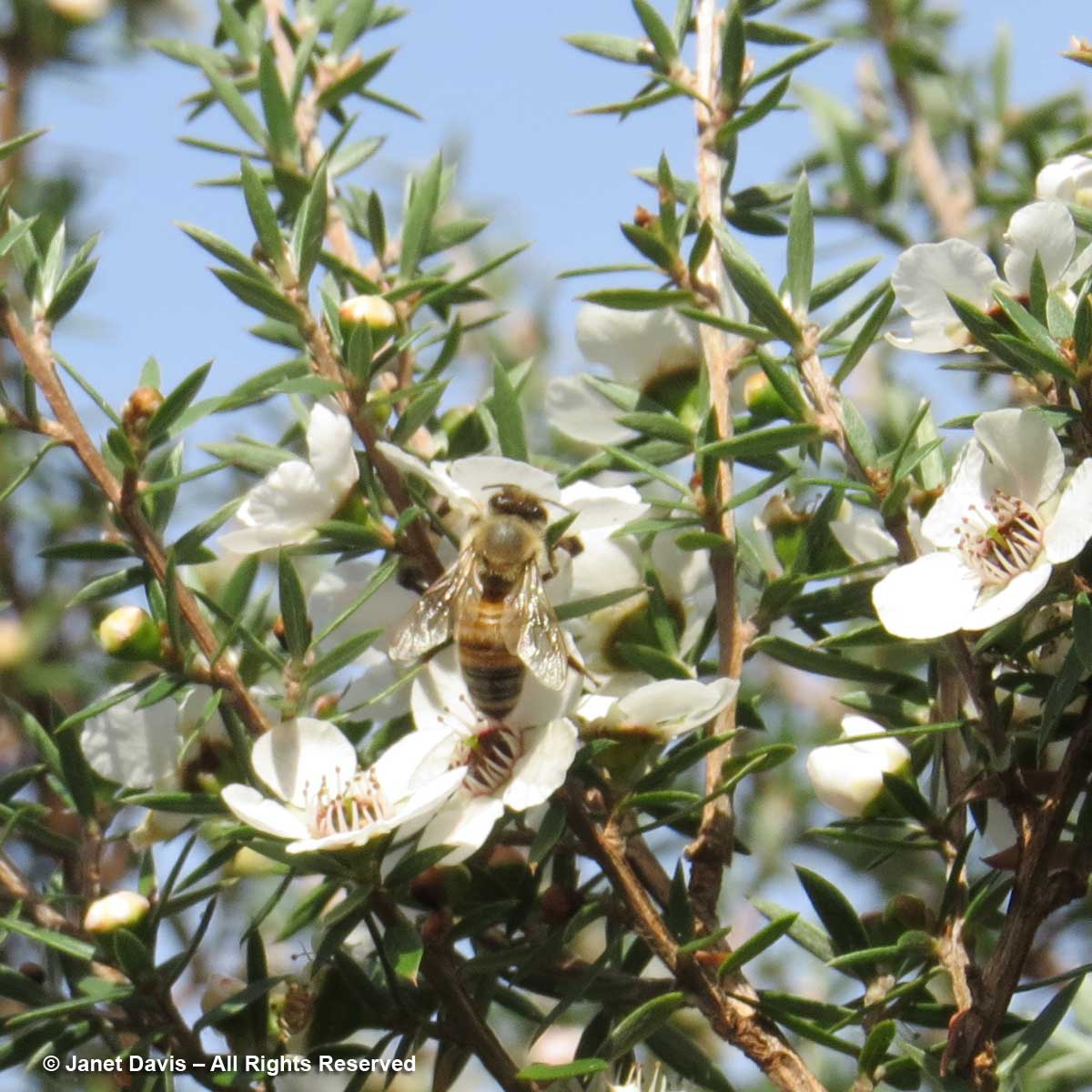
Purple prairie clover (Dalea purpurea) was featured on Feb.8th. This gorgeous tallgrass prairie denizen is a favourite with all kinds of native N. American bees, including the bumble bee, below.
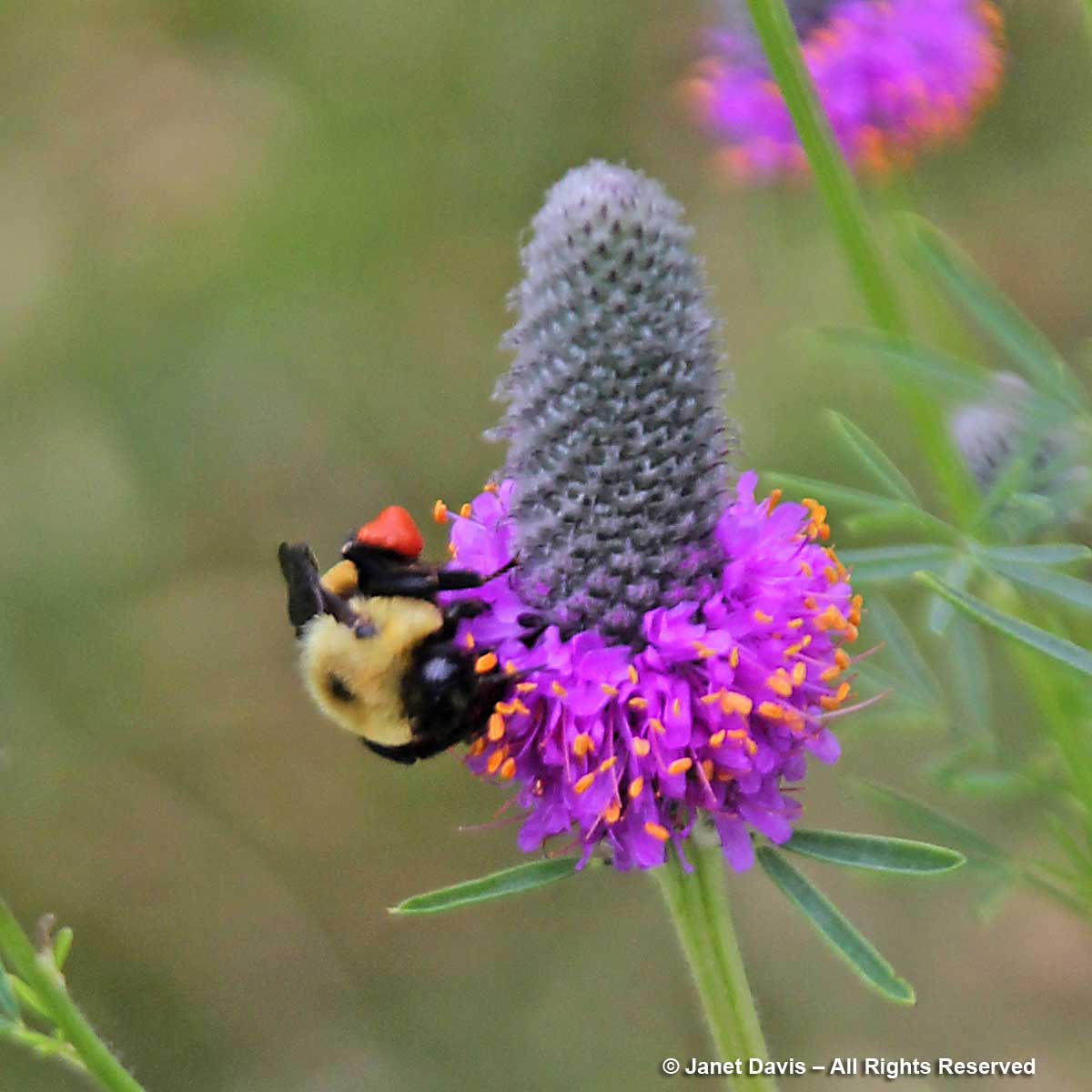
Blue mist bush, bluebeard, blue spirea…. call it what you will, but Caryopteris x clandonensis, my pollinator plant for Feb. 9th, is a stunning, late-flowering shrub with blue flowers that bees adore. The variegated one with a bumble bee, below, is ‘Summer Sorbet’.
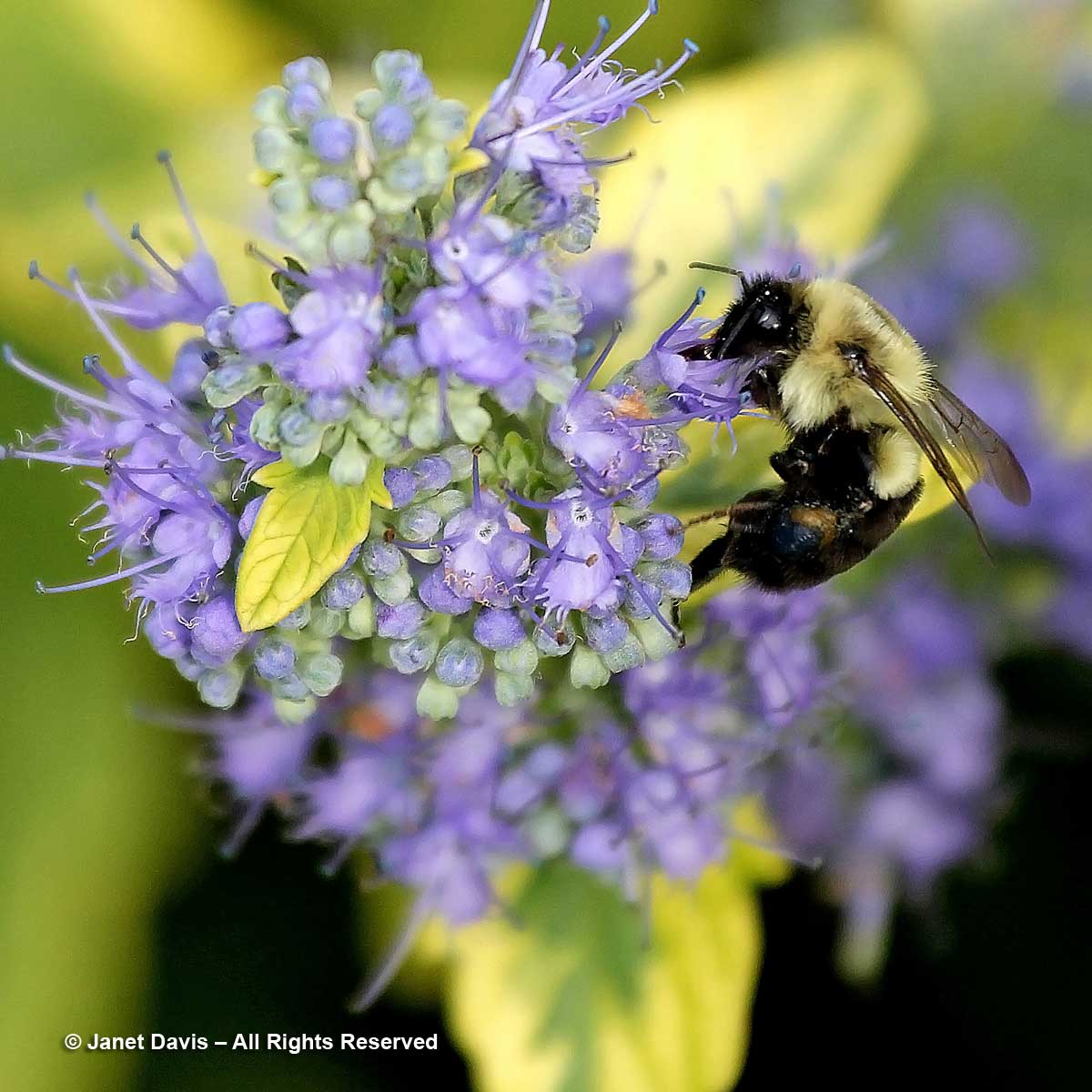
On Feb. 10th, dandelions (Taraxacum officinale) were celebrated as a pollinator food source, not a weedy scourge. Oh… and I had to include a photo of my granddaughter that day with her springtime dandelion fairy crown!
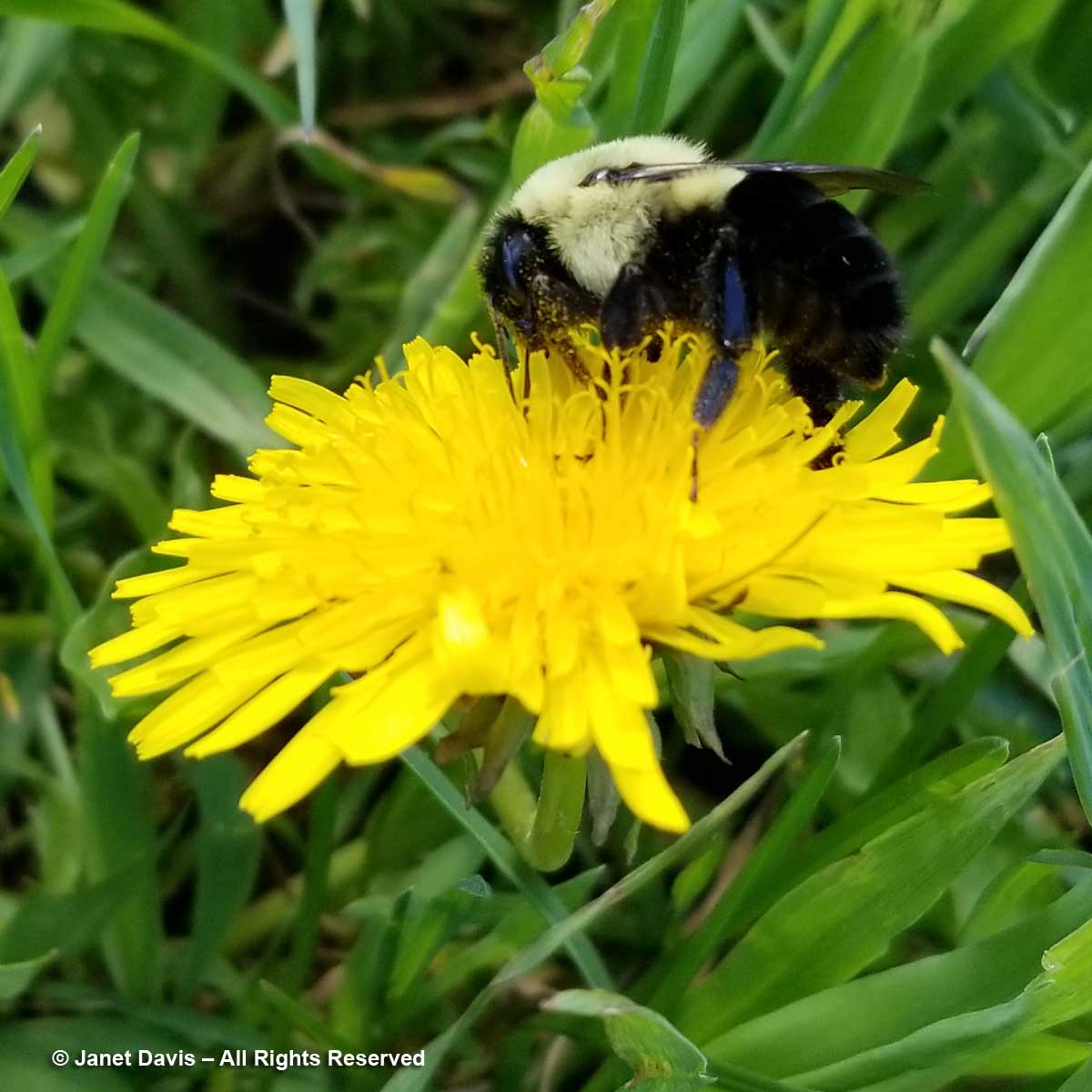
Buckwheat anyone? On Feb. 11th I recalled a visit to an entire field of buckwheat (Fagopyrum esculentum) in Collingwood, Ontario in order to photograph the honey bees from the nearby hives belonging to Curry’s Farm Market. What a sight that was!
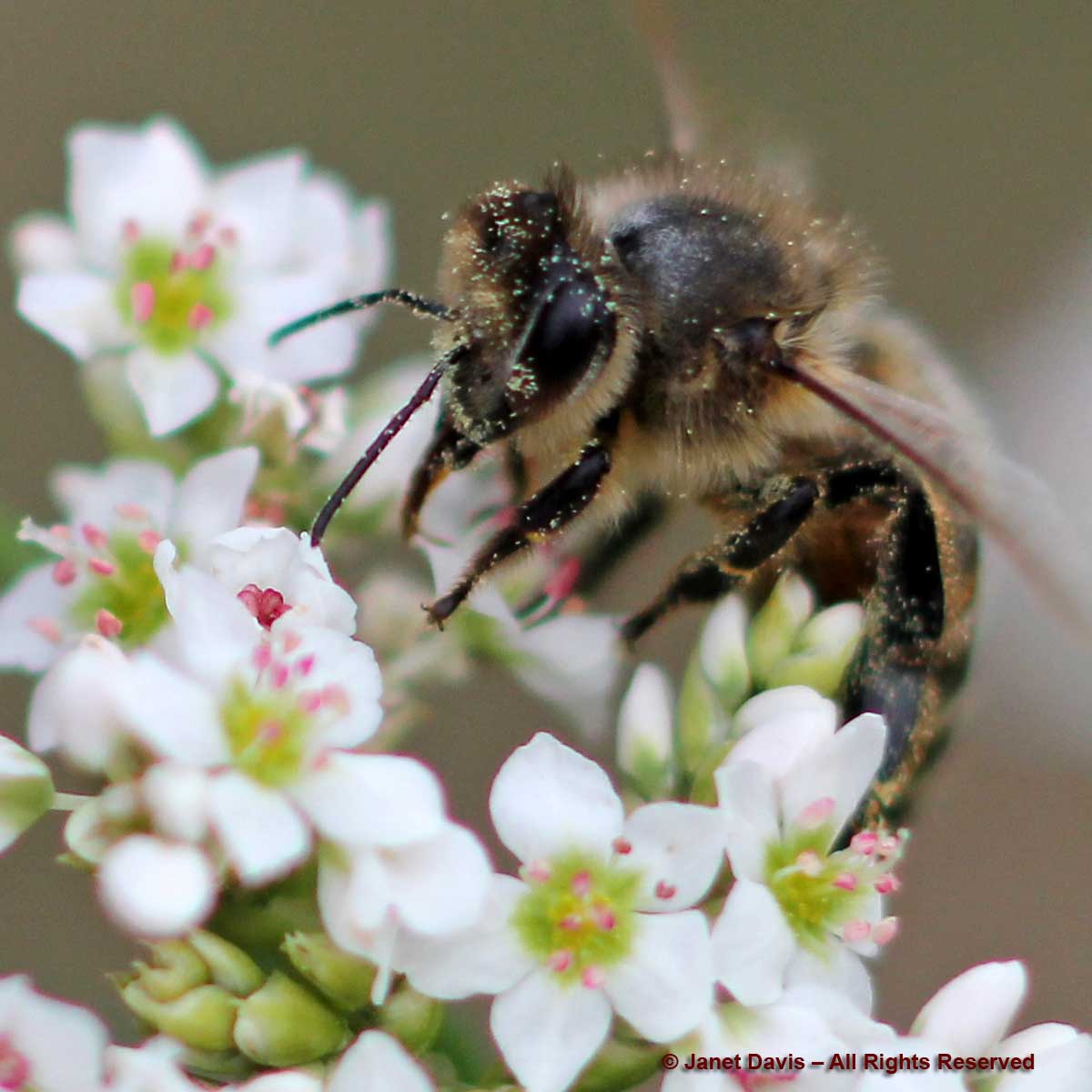
Nectar-rich cranesbills or perennial geraniums starred on Feb. 12th when I found every bee on every possible species in my photo library (9 in all), including the mourning widow, Geranium phaeum, below, with its precarious perch for a honey bee.
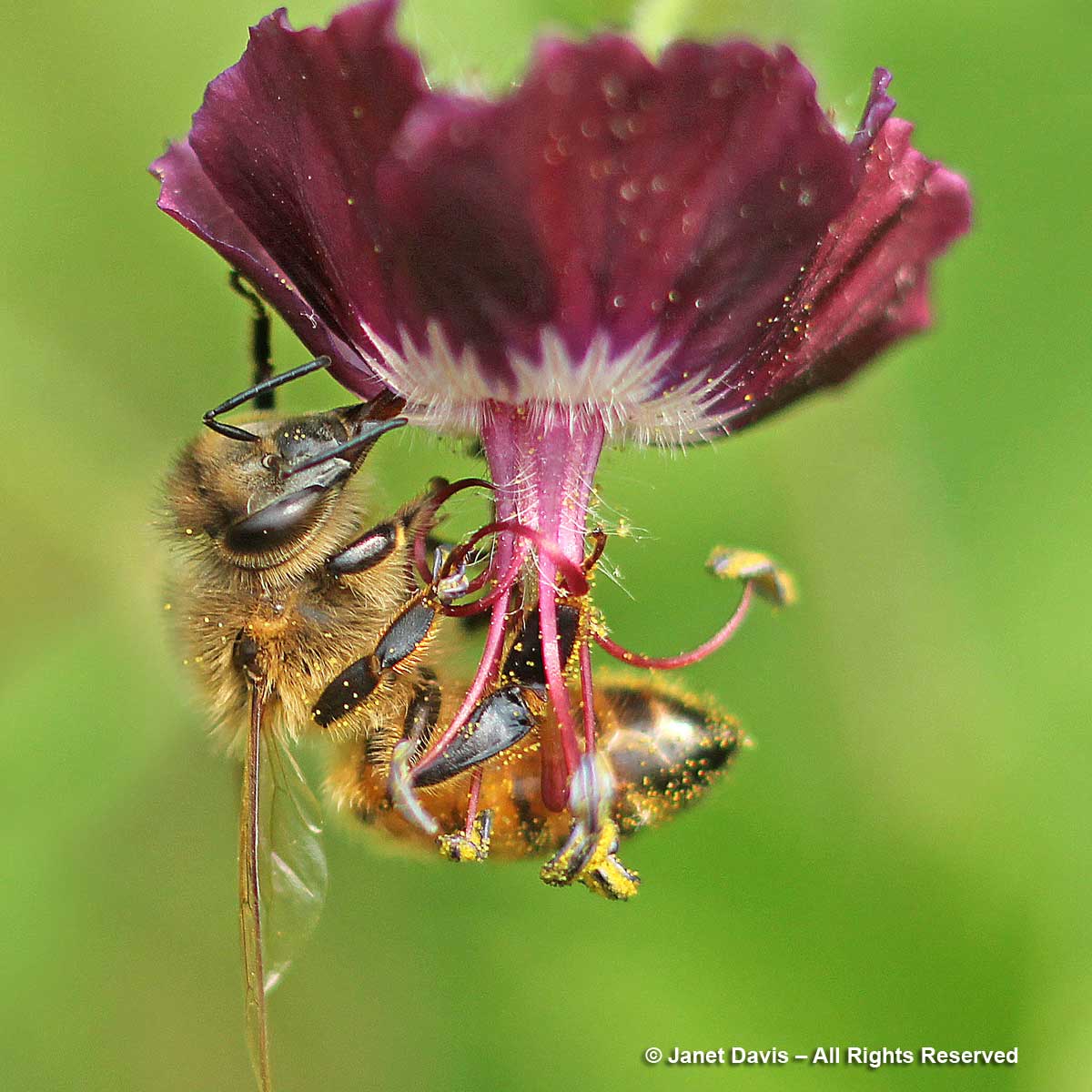
Tropical lantanas are generally good butterfly and bee plants to grow as annuals in colder regions, but hummingbirds like them too, as I showed on Feb. 13th with trailing lantana (L. montivedensis), below.
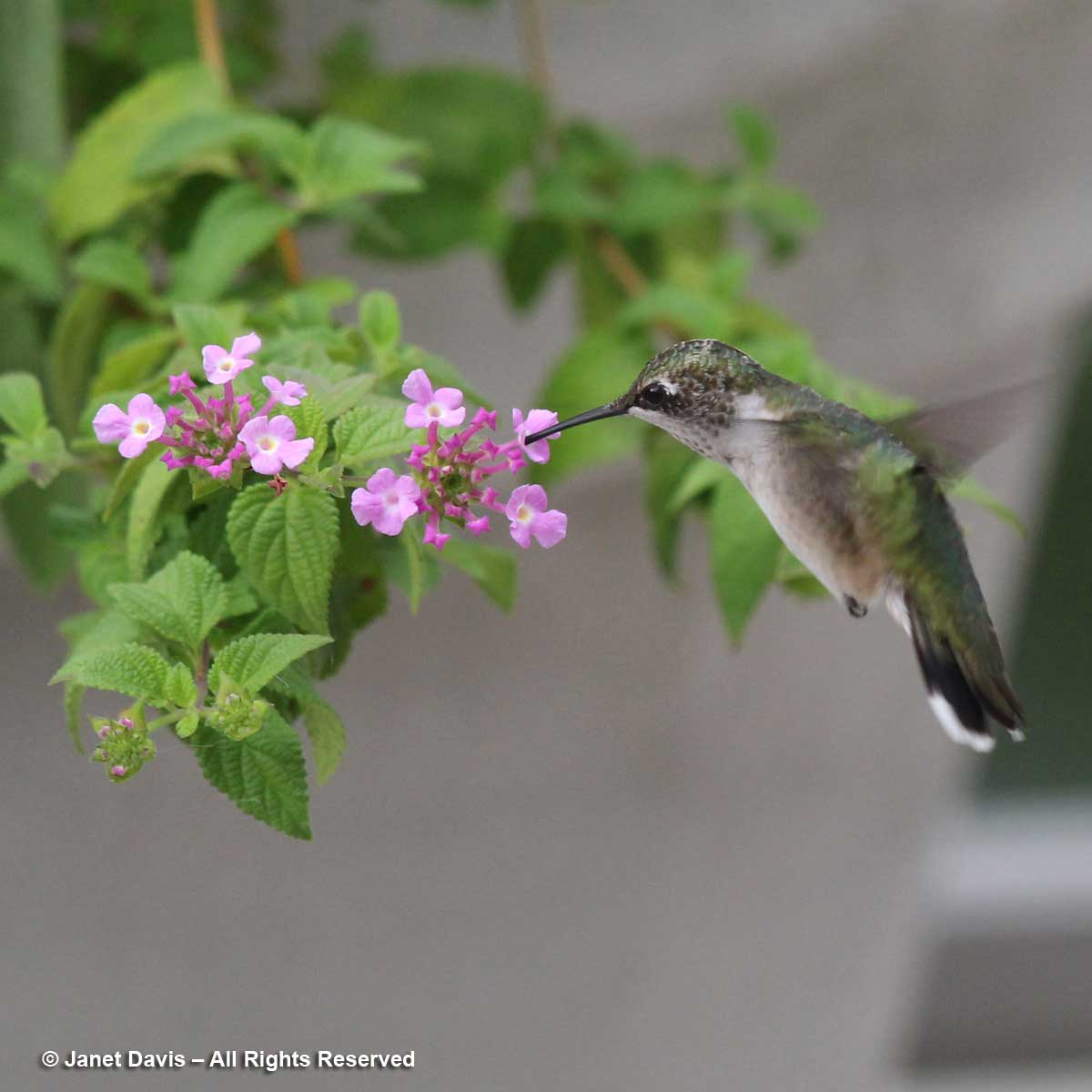
For Valentine’s Day, Feb. 14th, I picked one of my favourite pollinator perennials, purple coneflower (Echinacea purpurea). I have it growing in my front yard pollinator garden in Toronto where it attracts butterflies and bees for weeks and weeks in midsummer.
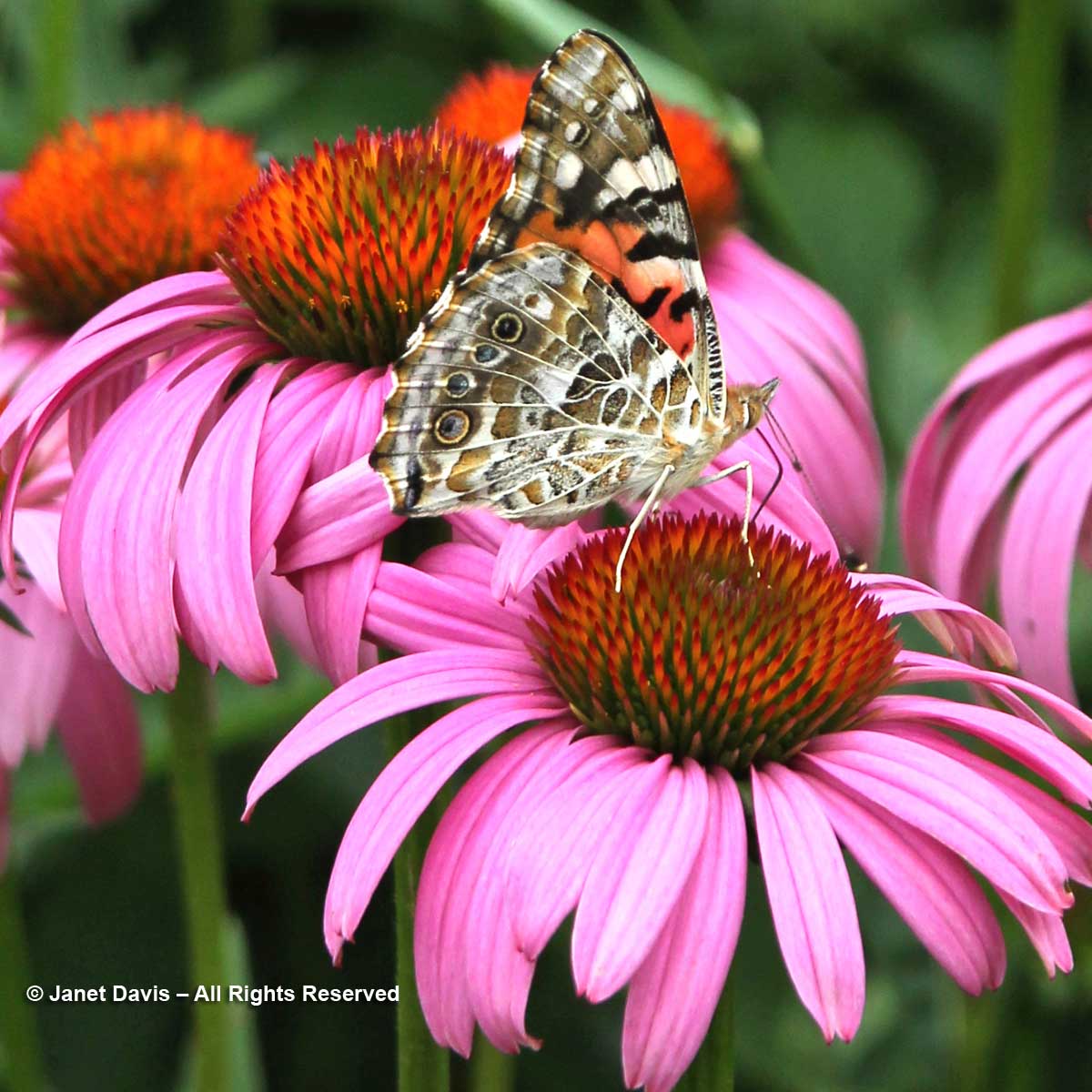
I rarely see a cornflower without a bee, so on Feb. 15th I celebrated annual and perennial cornflowers (Centaurea species), including the four below, counter clockwise from top left: mountain bluet (C. montana); big-head cornflower (C. macrocephala); annual cornflower (C. cyanus); and Persian cornflower (C. hypoleuca ‘John Coutts’).
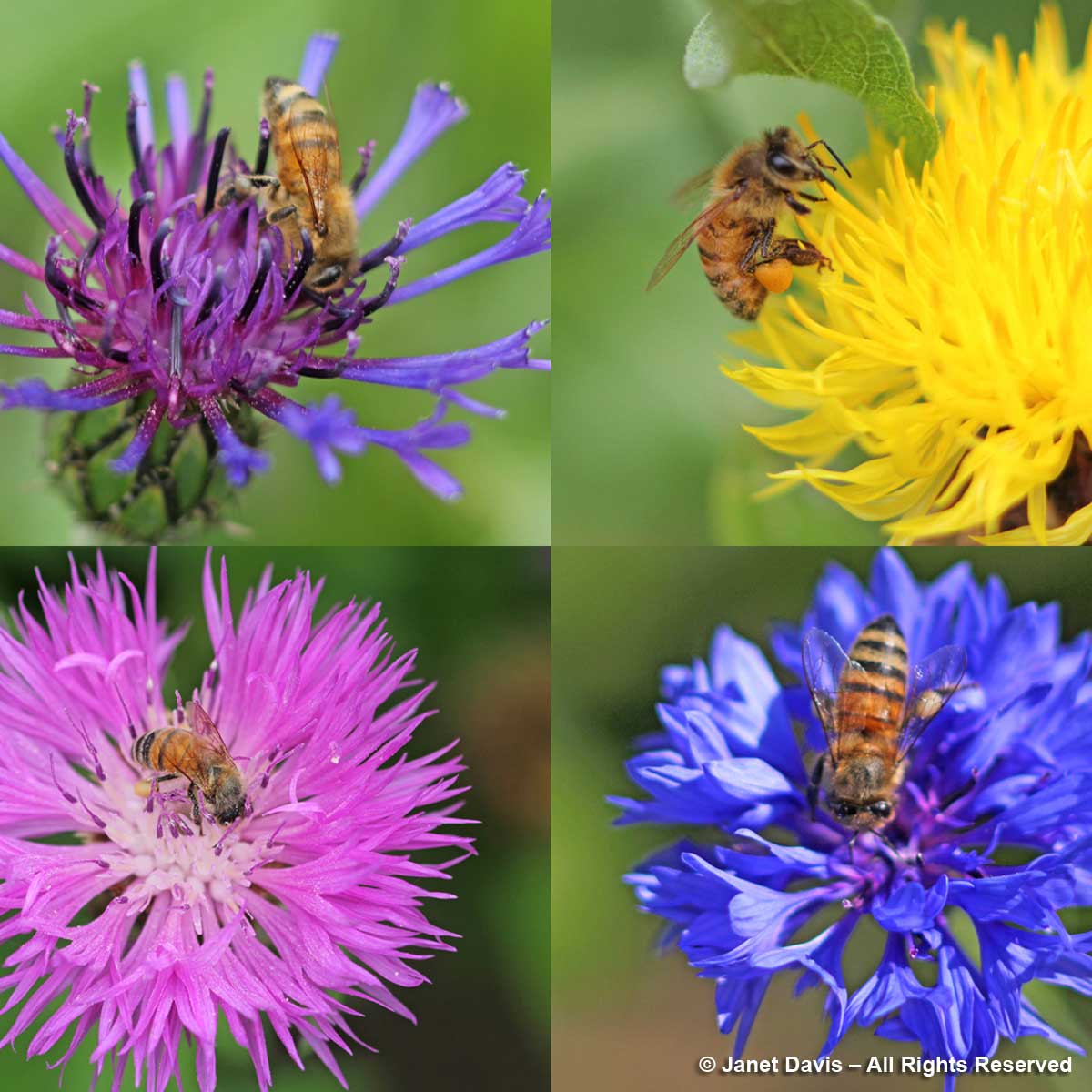
Rattlesnake master (Eryngium yuccifolium) is an unusual-looking prairie perennial which makes an architectural addition to a border, where it often attracts wasps and flower flies as well as bees and butterflies. It was my choice for Feb. 16th.
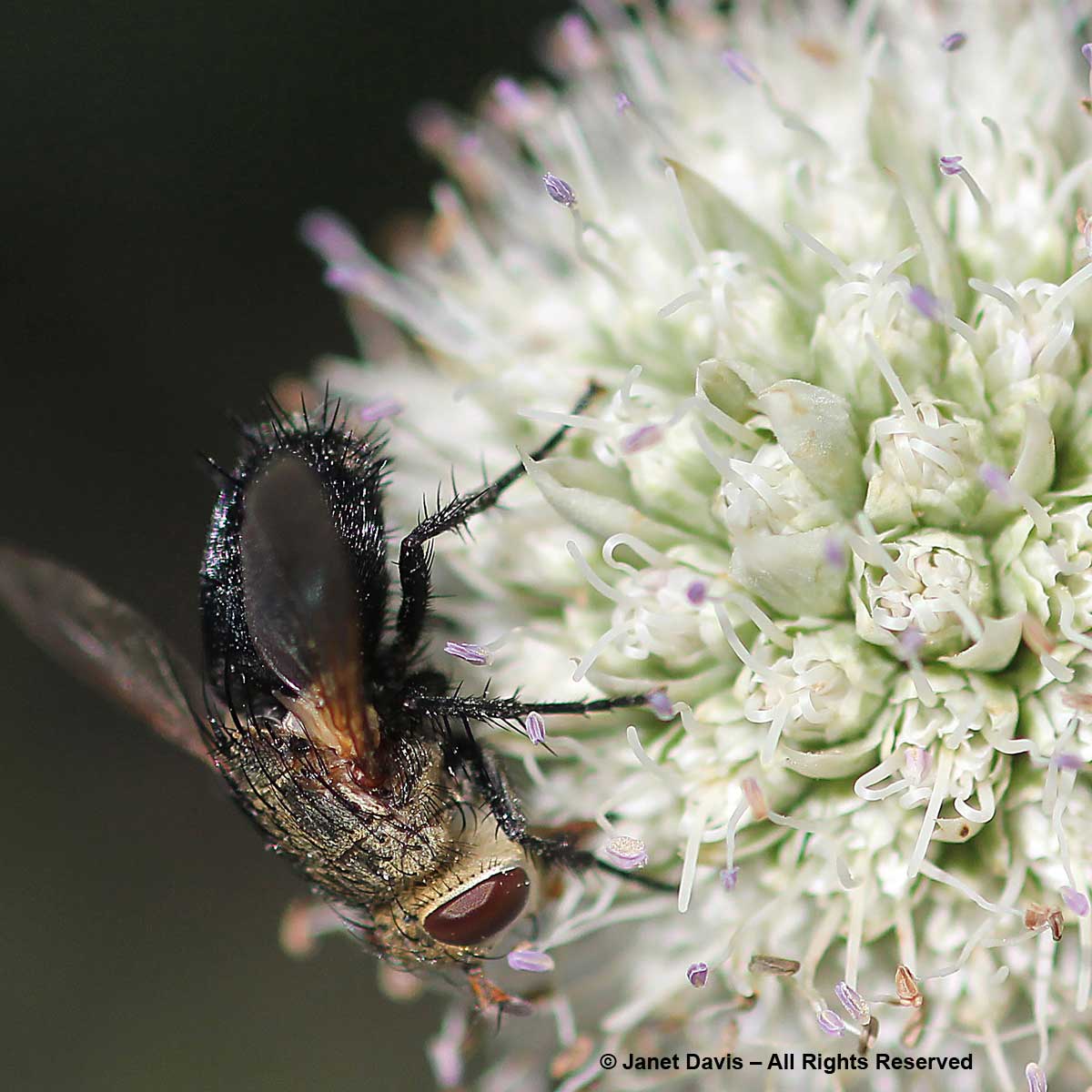
Borage (Borago officinalis) was the daily pollinator for Feb. 17th – an edible annual for herb gardens and much-loved by bees.
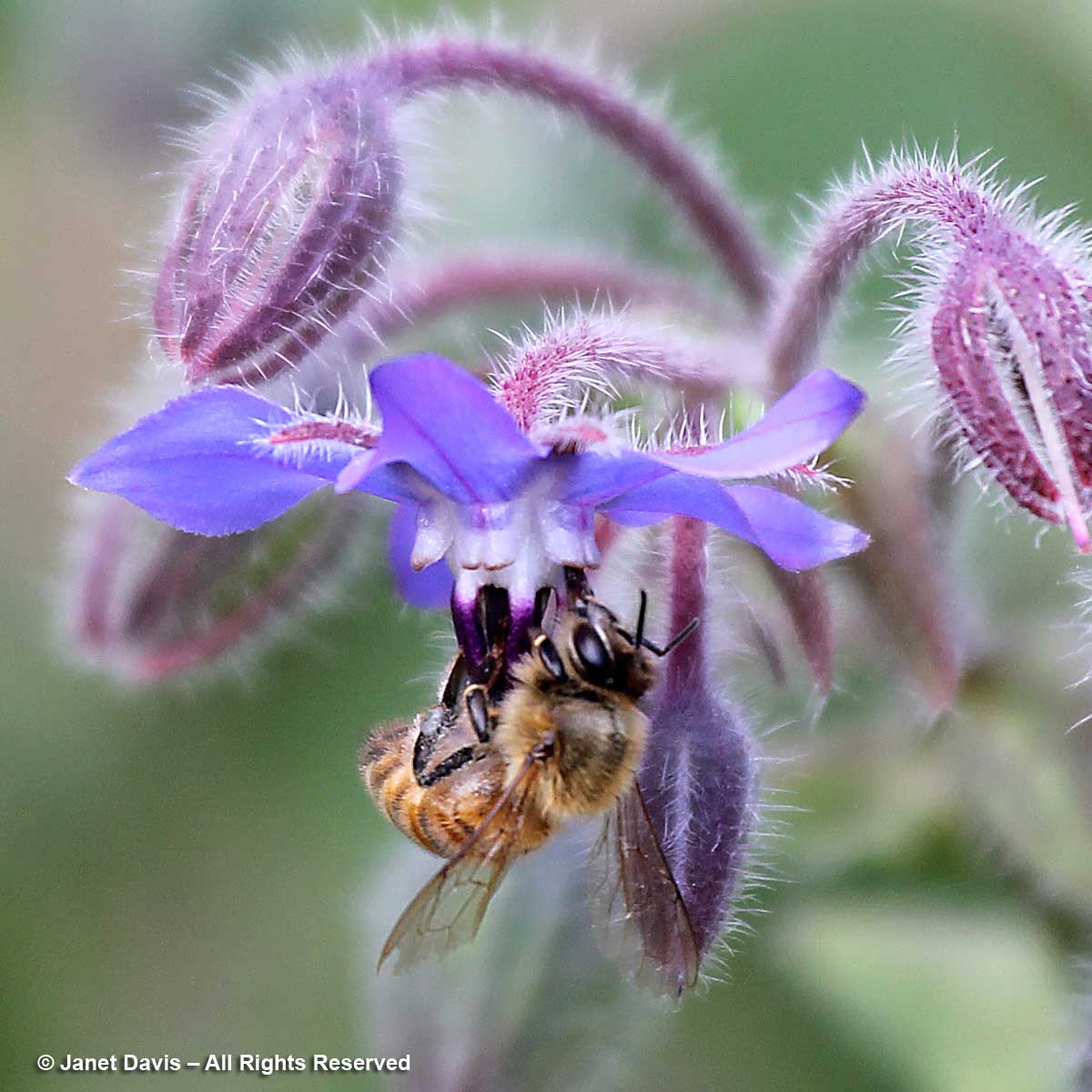
On Feb. 18th, I made a little joke about sneezing in Covid times (don’t do it!!) to introduce perennial sneezeweed (Helenium autumnale), so-called because the leaves were traditionally crushed and dried to make a snuff.
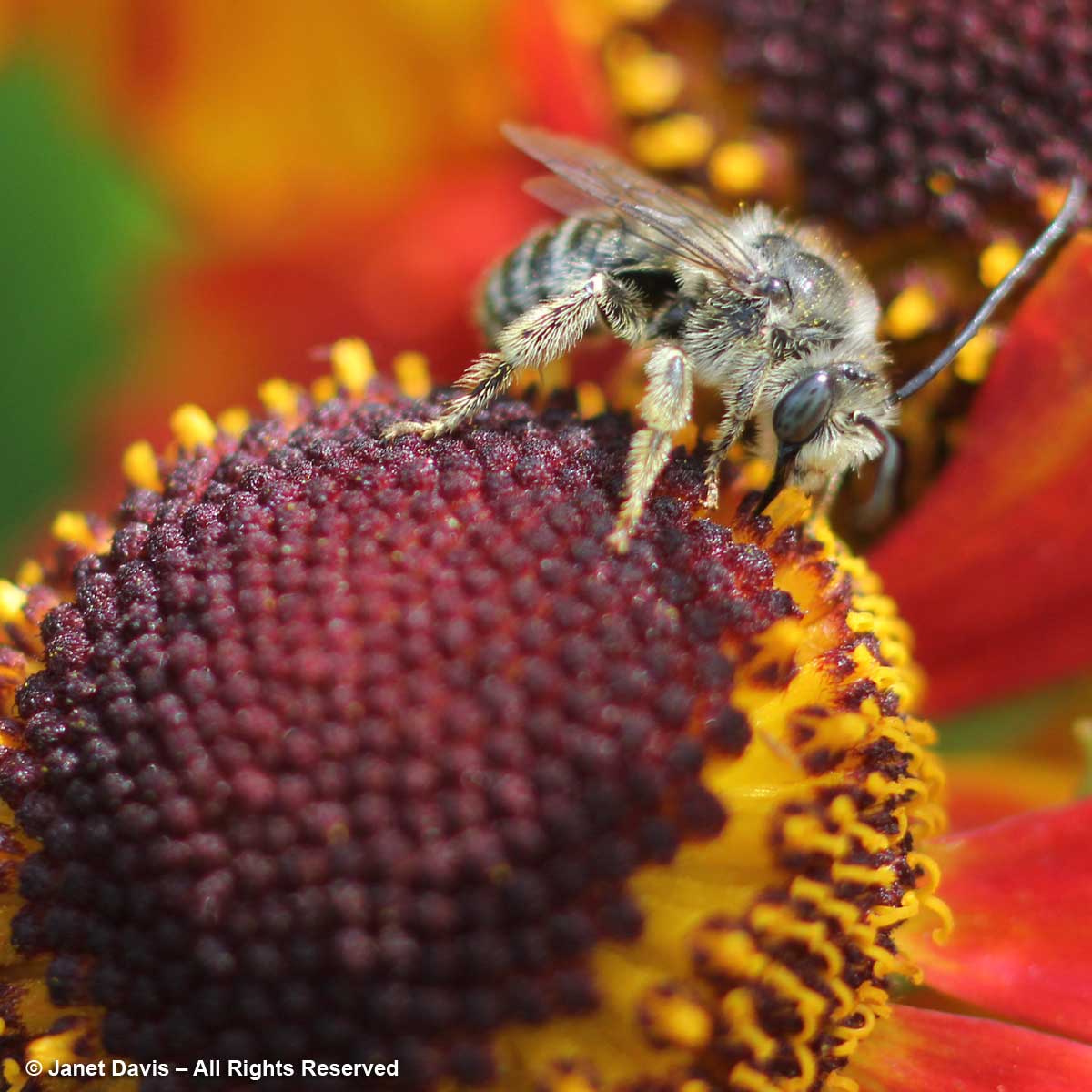
On Feb. 19th, I chose Agapanthus with a honey bee to lead a photo parade of some of my favourite scenes from gardens in New Zealand, where agapanthus grows like a weed. I focused especially on artist Josie Martin’s spectacular Giant’s House Garden in Akaroa, which I celebrated with a blog called The Giant’s House – A Mosaic Master Class .
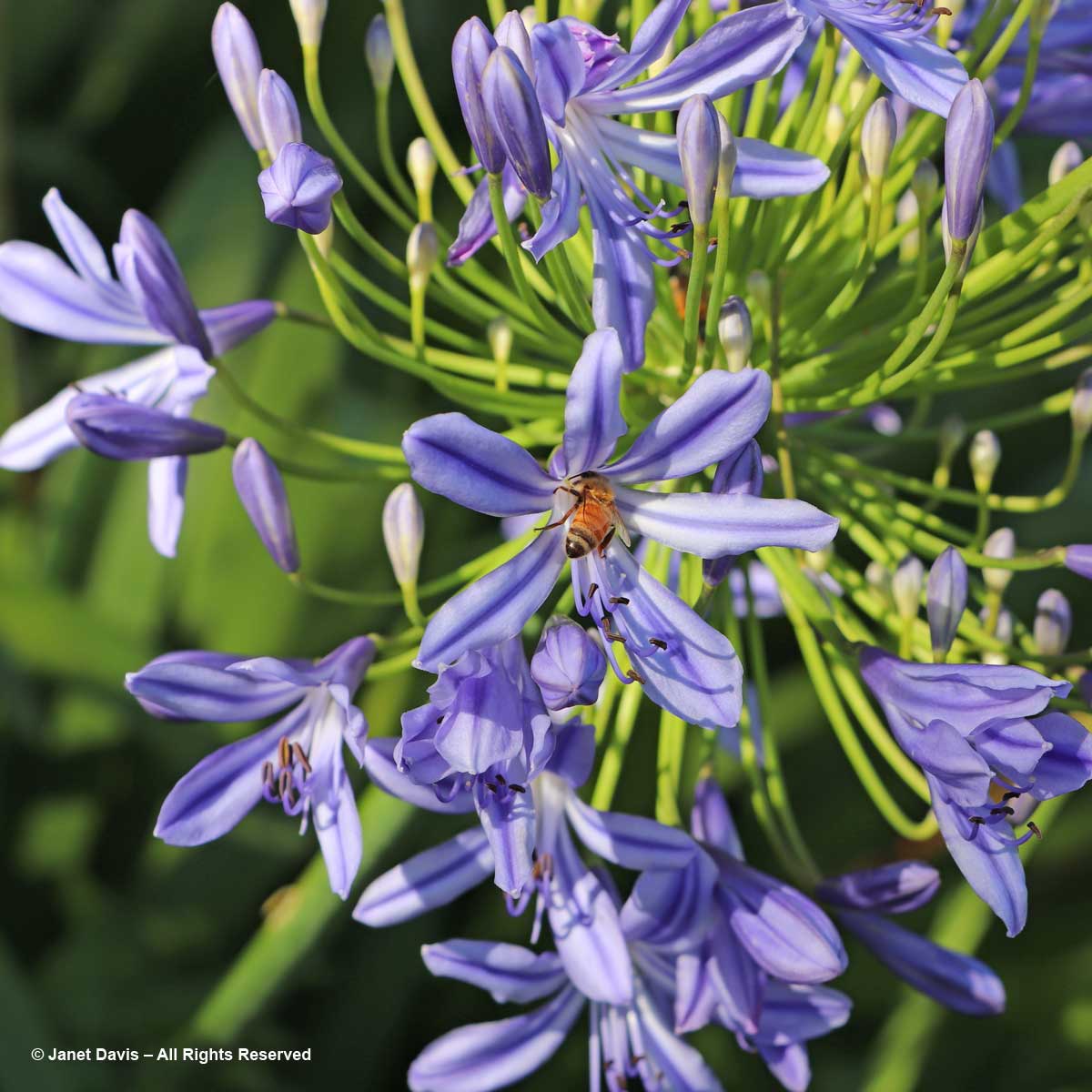
Do I have a favourite pollinator plant? It’s a toss-up between the orange-flowered butterfly milkweed (Asclepias tuberosa) I featured on Nov. 5th and wild beebalm (Monarda fistulosa), my star for Feb. 20th. Since I call the west meadow at my cottage “Monarda Meadow” for this easy-going perennial, it’s only natural that I enjoy the tremendous number of pollinators attracted to its shaggy pink flowers, from bumble bees (below) to butterflies to clearwing hummingbird moths to actual hummingbirds. (Oh, I wrote a blog about it, too, called A Balm for the Bees!)
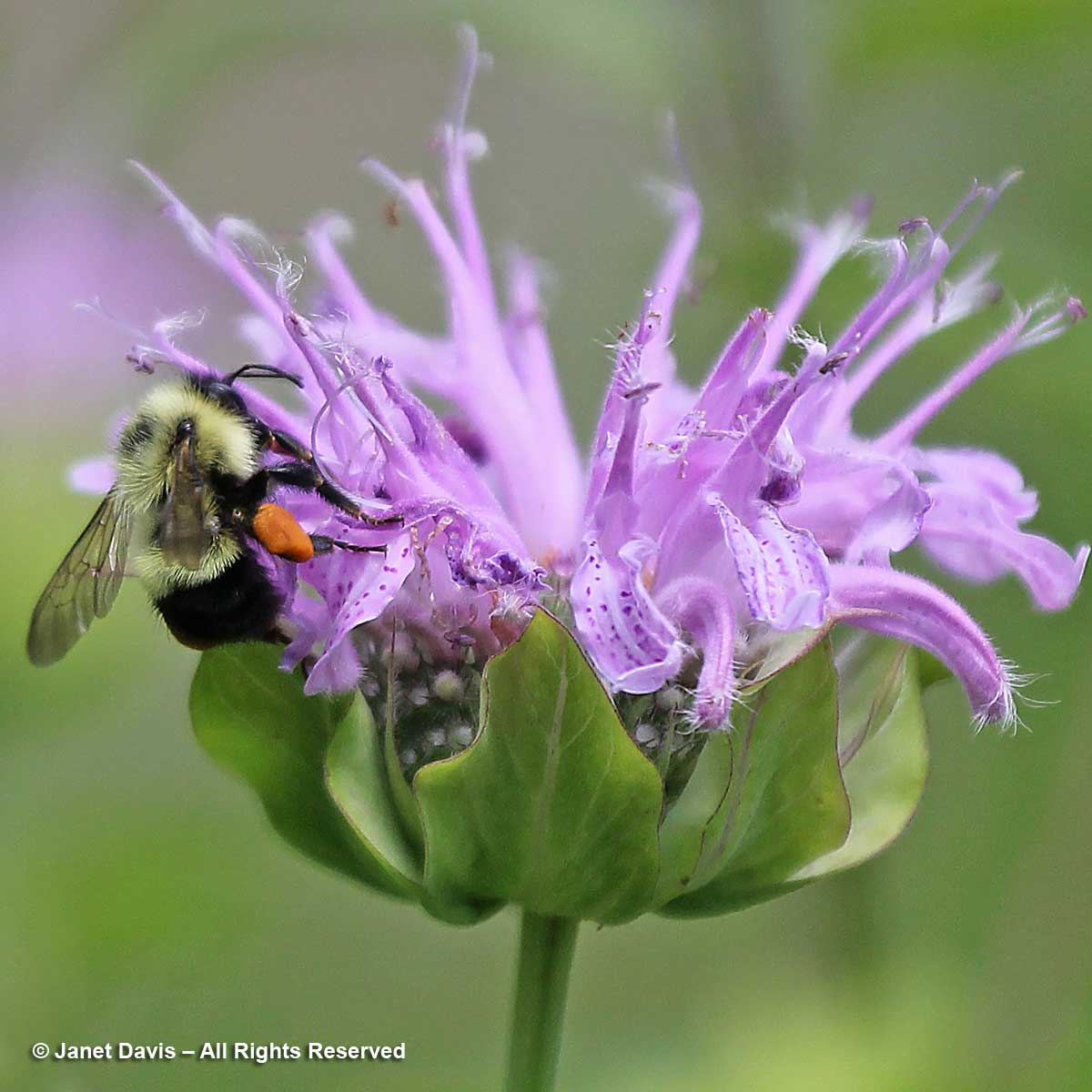
Feb. 21st saw me explaining the unusual nectar guides on a horse chestnut (Aesculus hippocastanum) inflorescence, which show yellow when nectar-filled and unpollinated – yellow being a colour bees can see – but turn red (bees can’t see red) after pollination.
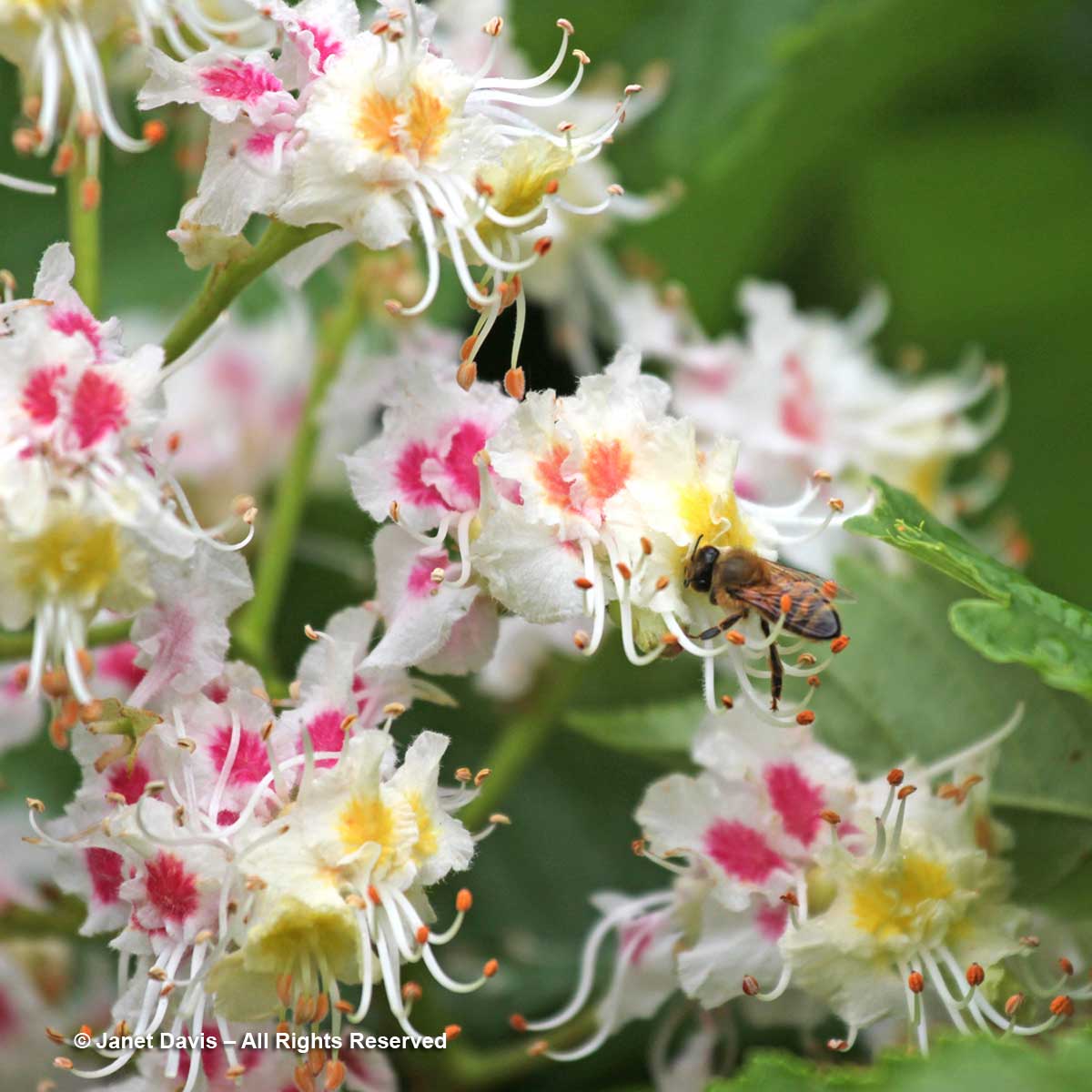
Obedient plant (Physostegia virginiana) and a lot of nectar-robbery was on my mind on Feb. 22nd, featuring this northeast native with its moisture-loving, wandering ways. That’s the eastern Carpenter bee (Xylocopa virginica), below, stealing a little nectar by piercing the sepals to get at the nectaries at the top of the tubular flowers.
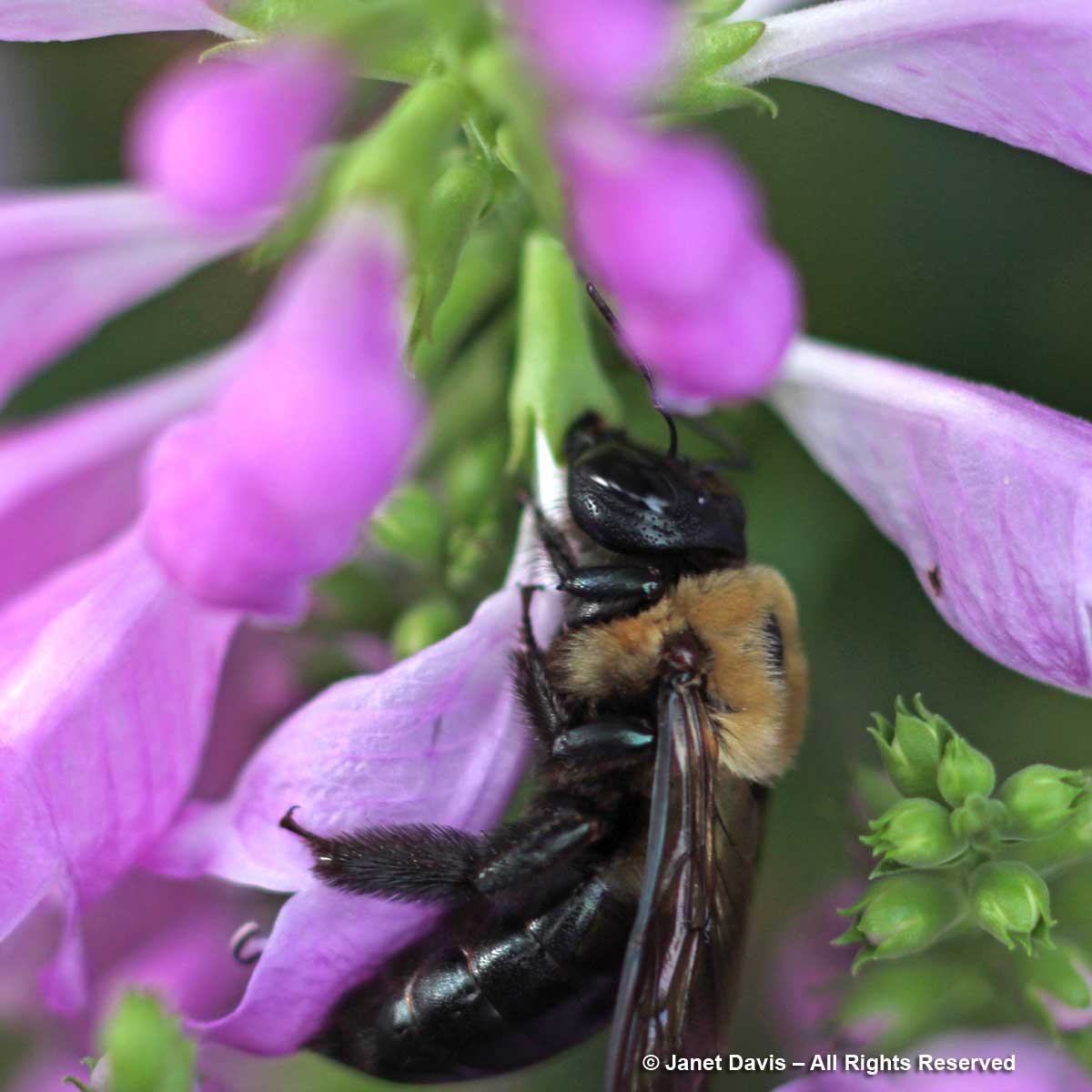
So many gardeners love old-fashioned peonies, but the doubles aren’t accessible to pollinators. So on Feb. 23rd, I celebrated bees on single and semi-double herbaceous and tree peonies (Paeonia spp.). By the way, that’s the appropriately-named brown-belted bumble bee (Bombus griseocollis), below.
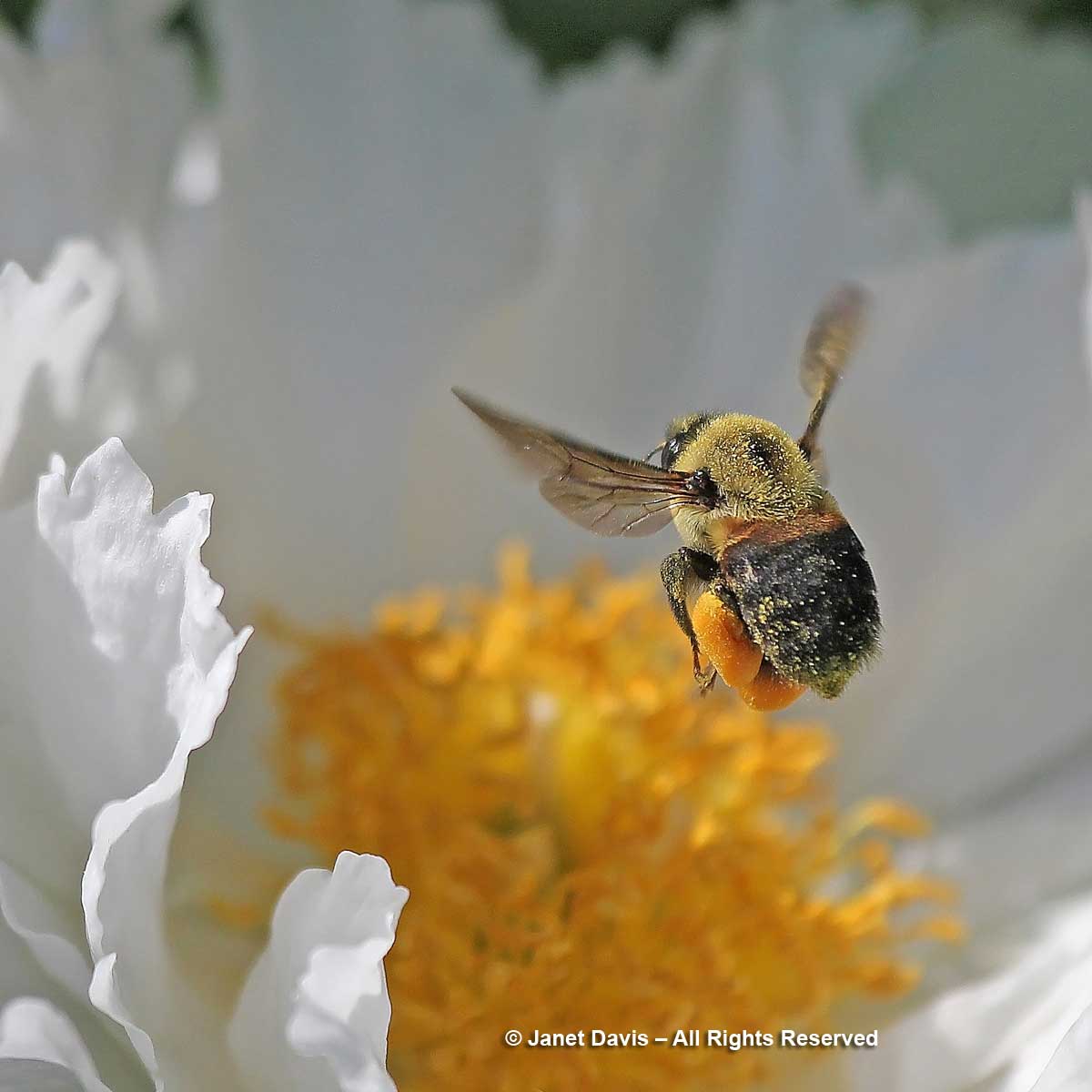
South African honey bush (Melianthus major) is hardy on the west coast and a lot of the garden cognoscenti enjoy growing it for its hummingbird- and bee-friendly flowers. My Feb. 24th pin-up pollinator was an Anna’s hummingbird (Calypte anna) I found nectaring on this plant at the University of California Botanic Garden at Berkeley.
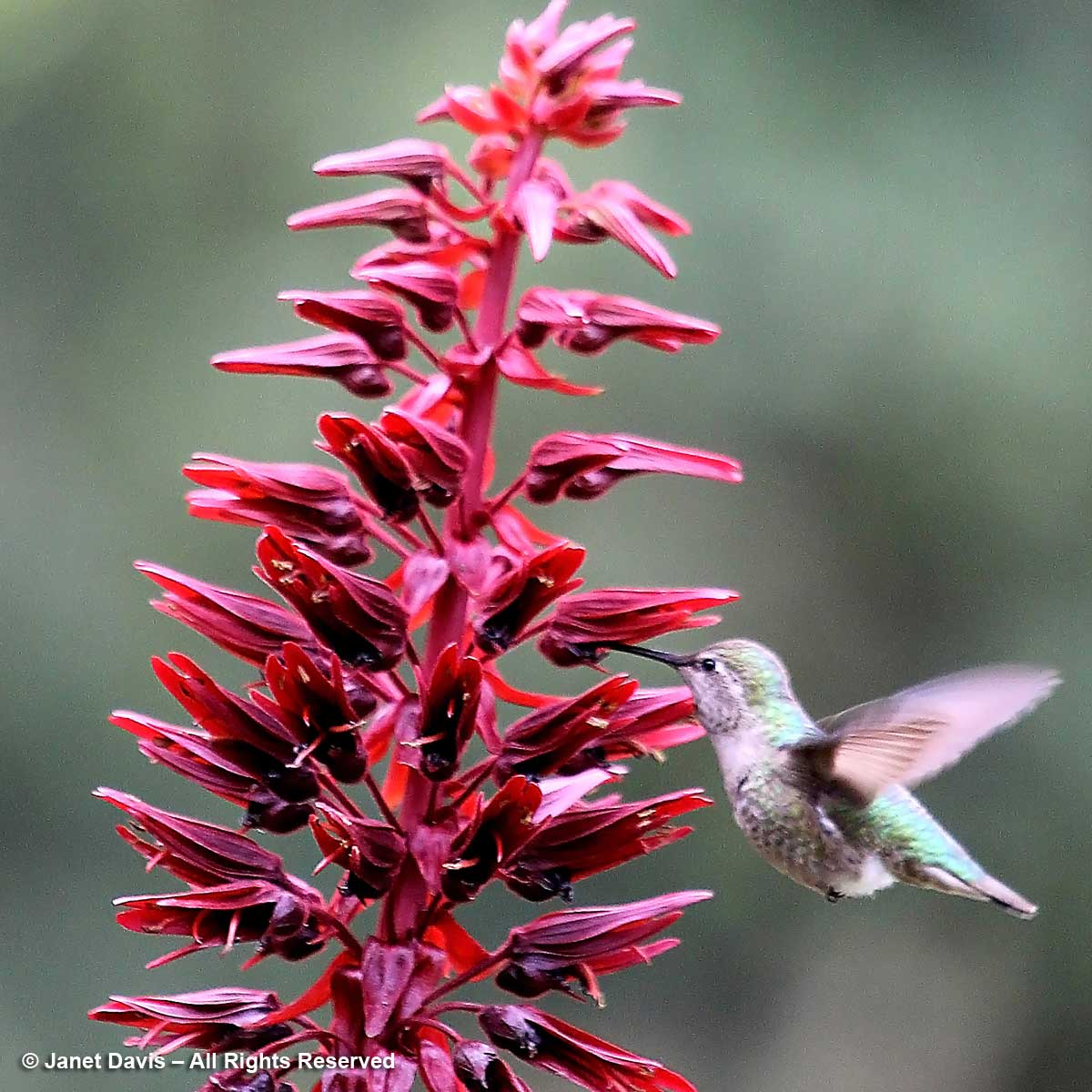
One of the most popular “filler” plants of the past few decades is also popular with bees and butterflies! I’m referring to my pollinator plant for Feb. 25th, the tender South American perennial Verbena bonariensis.
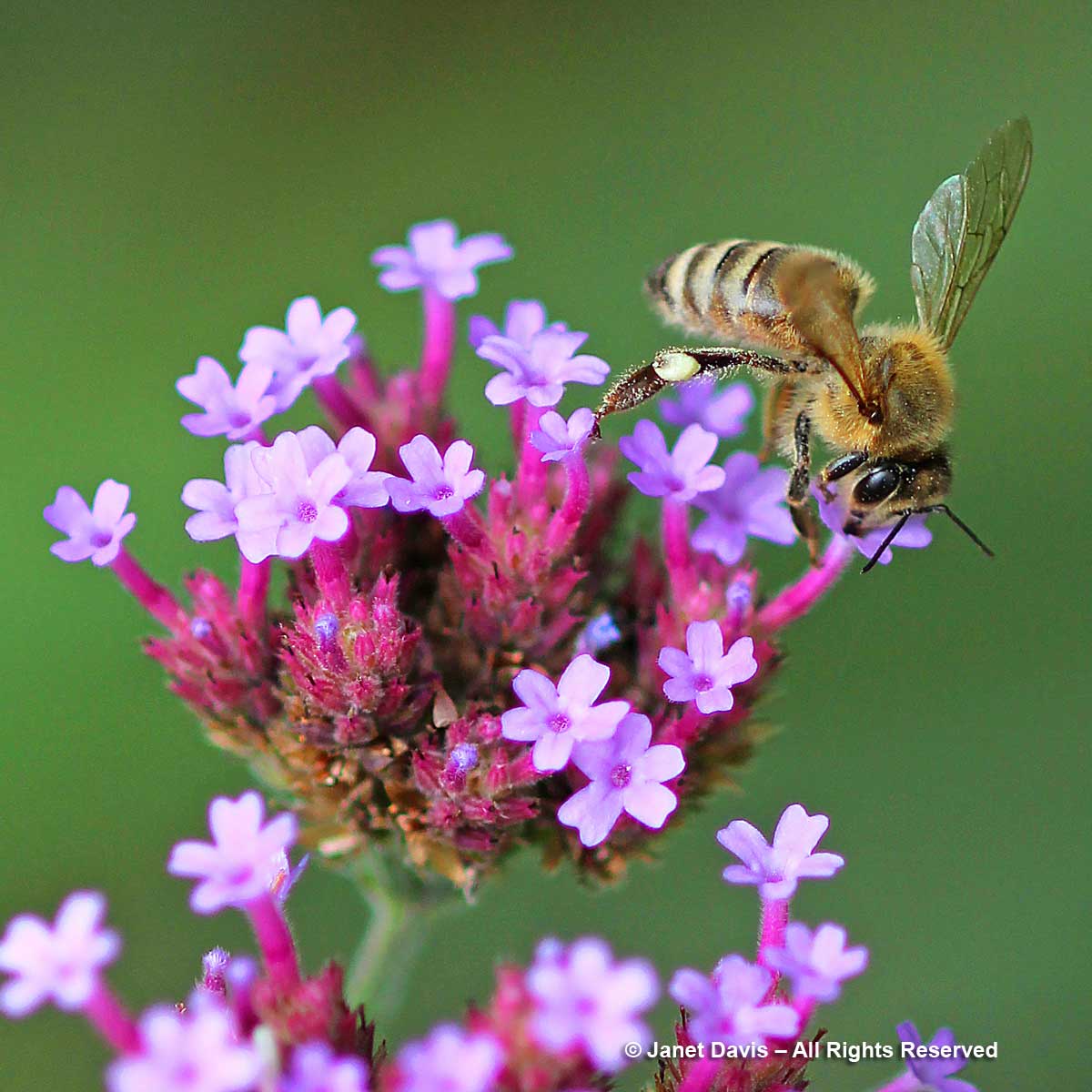
On Feb. 26th I paid homage to my very best plant for attracting ruby-throated hummingbirds, Salvia guaranitica ‘Black and Bloom’, as well as the purple hybrid ‘Amistad’. By the way, if you want to design a garden for hummingbirds, have a look at my blog called Planting a Hummingbird Menu.
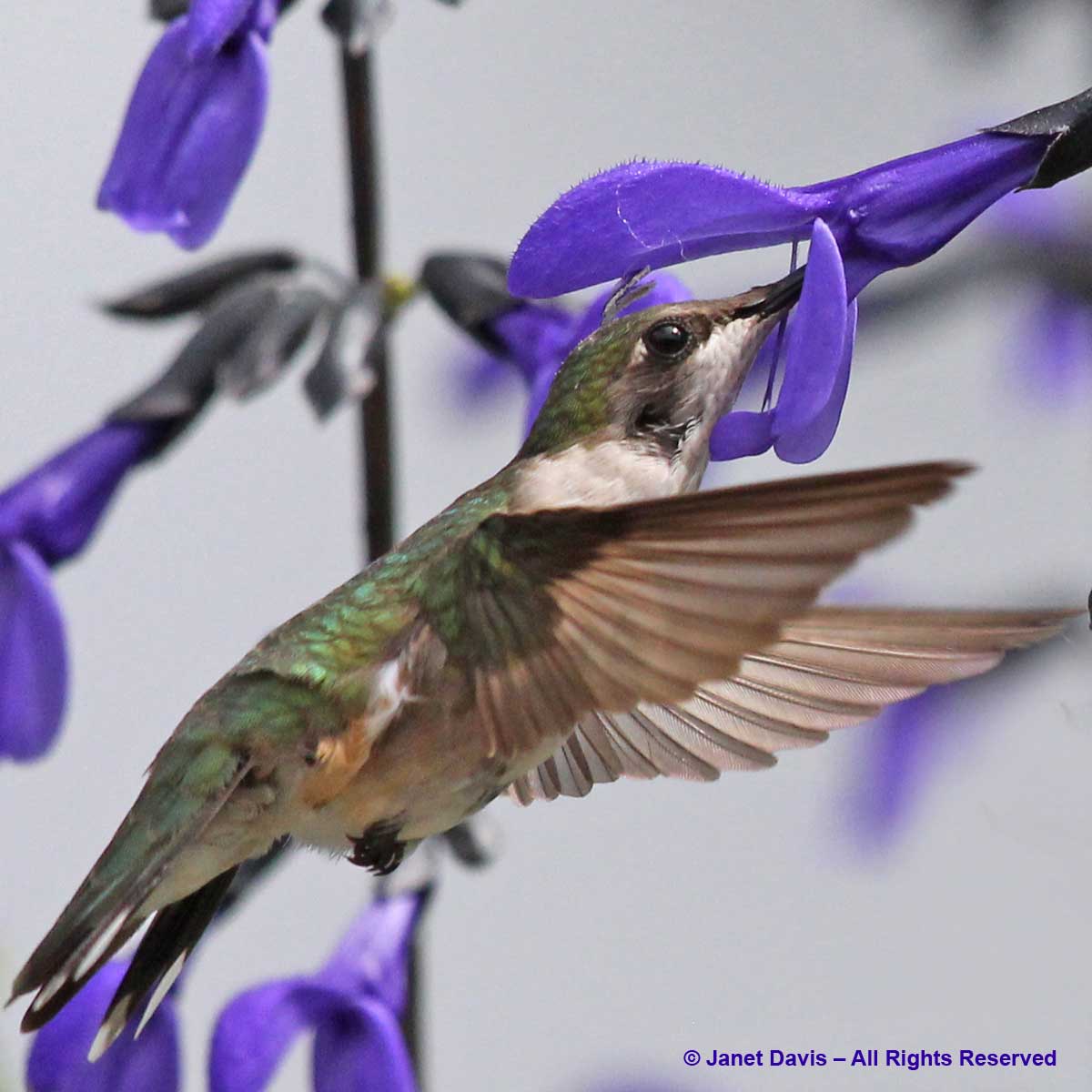
Who was “Joe Pye”? A native American herbalist, it’s believed. We don’t really know but on Feb. 27th, I celebrated a few native N. American species and cultivars of Joe Pye weed and the genus Eutrochium (formerly Eupatorium). Below, a monarch butterfly enjoys E. maculatum ‘Gateway’.
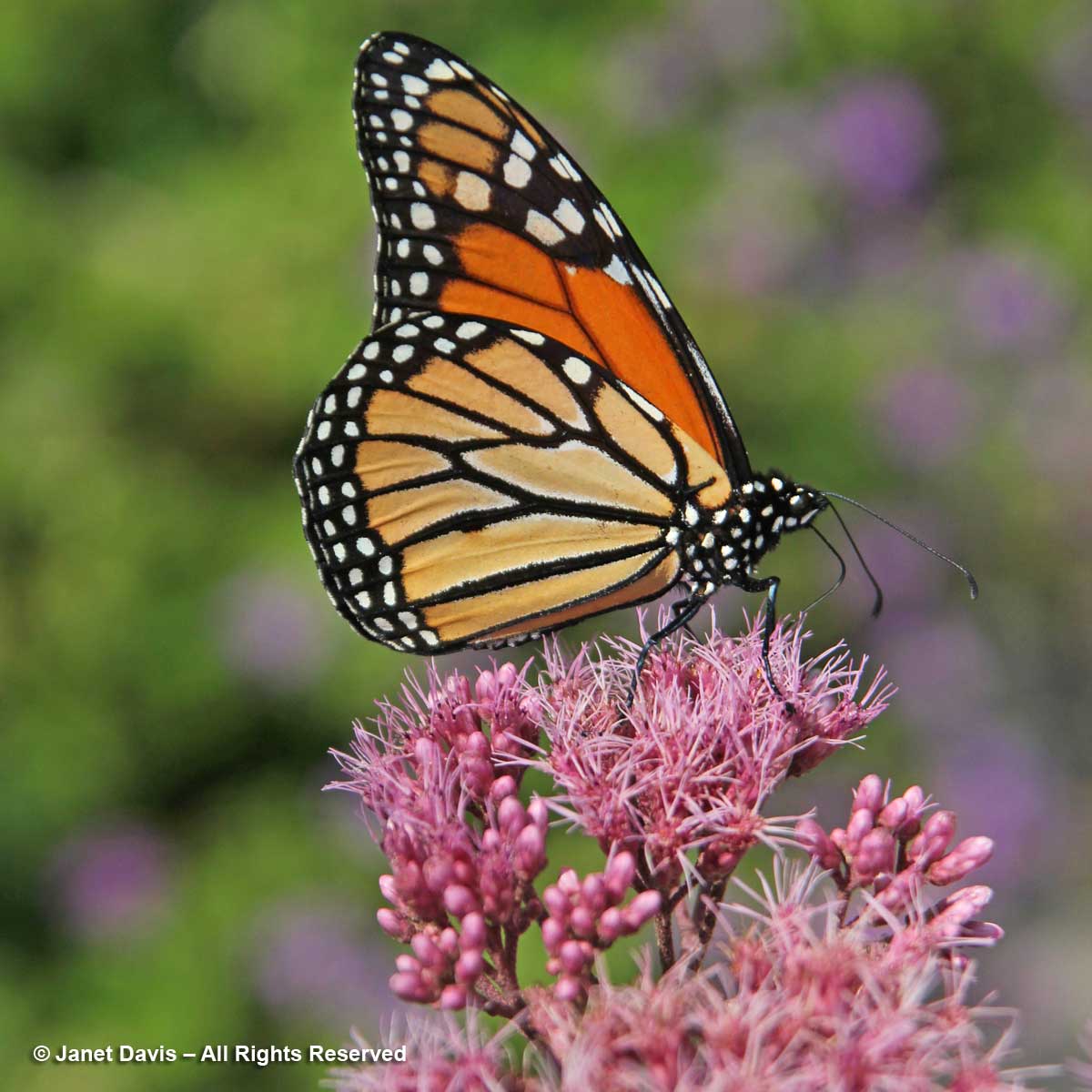
My last plant for February was the black locust tree (Robinia pseudoacacia), with its fragrant, bee-friendly June blossoms.
